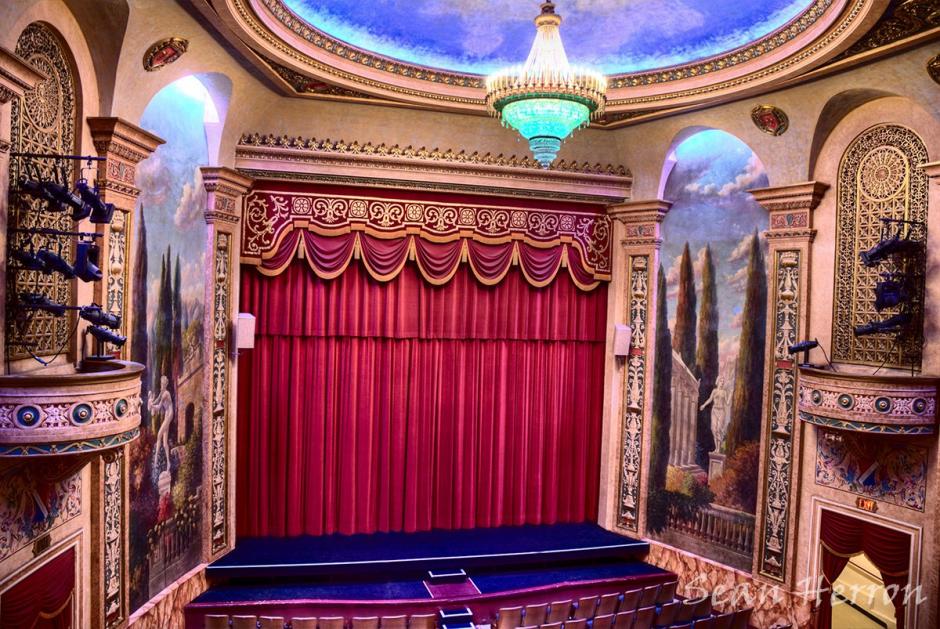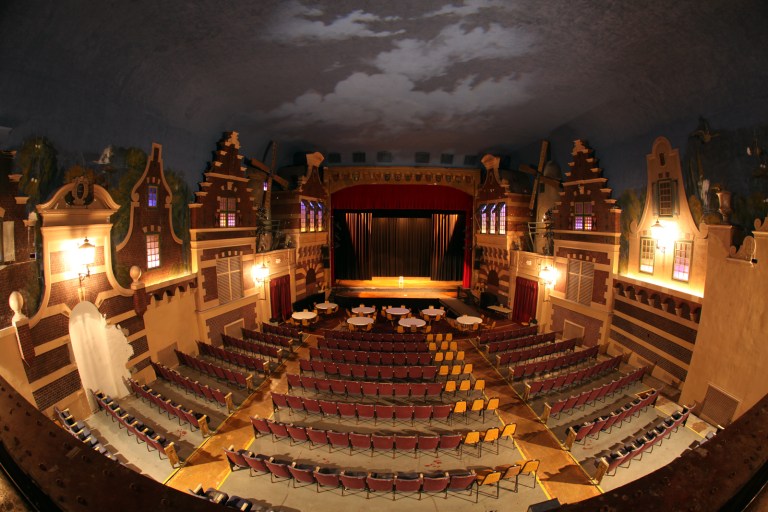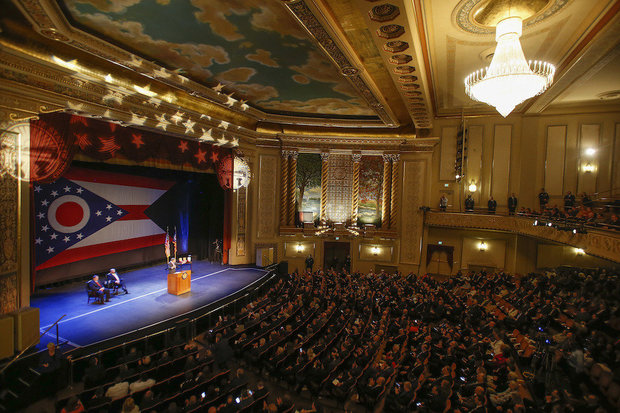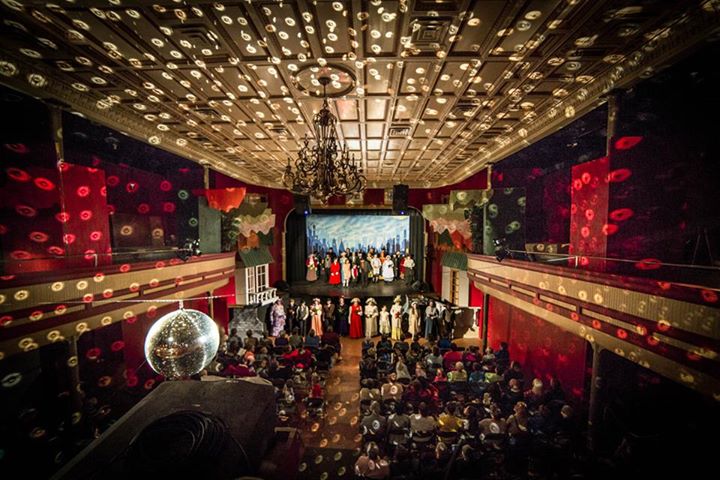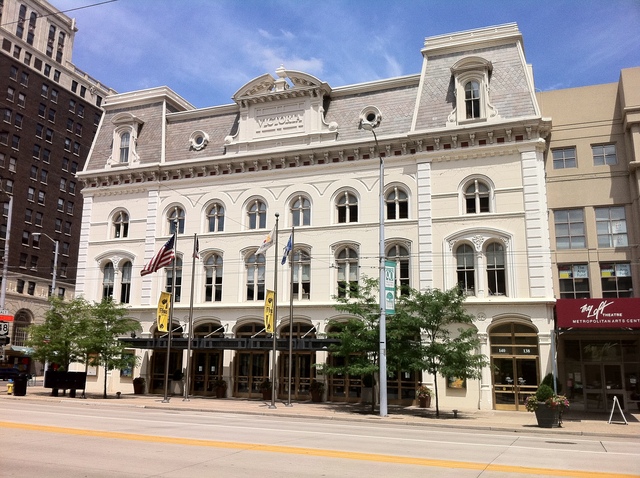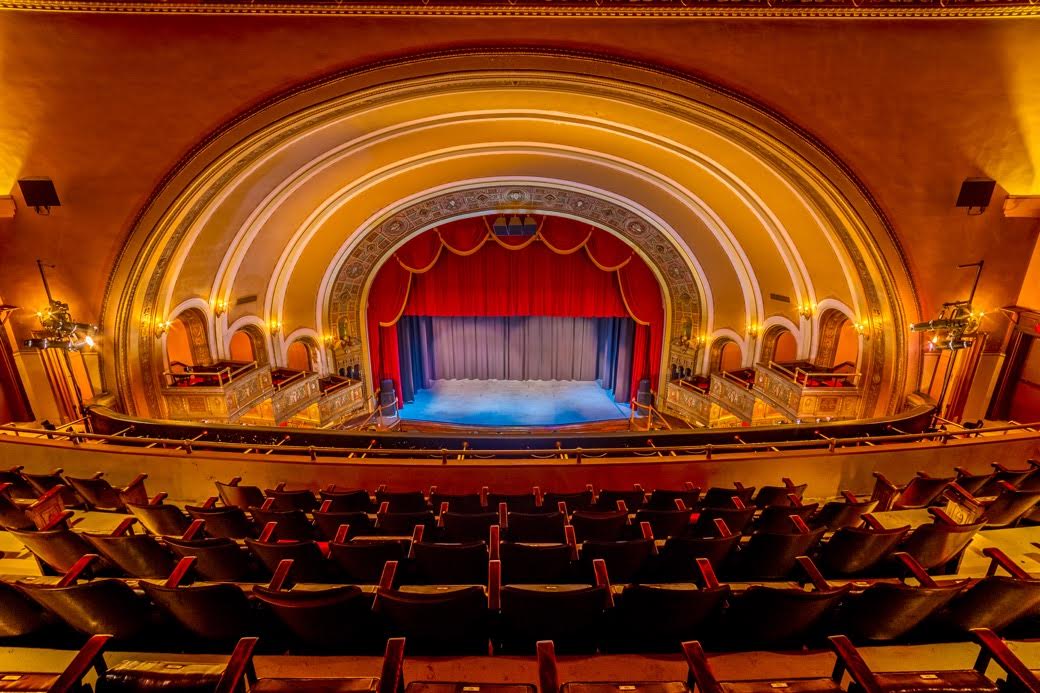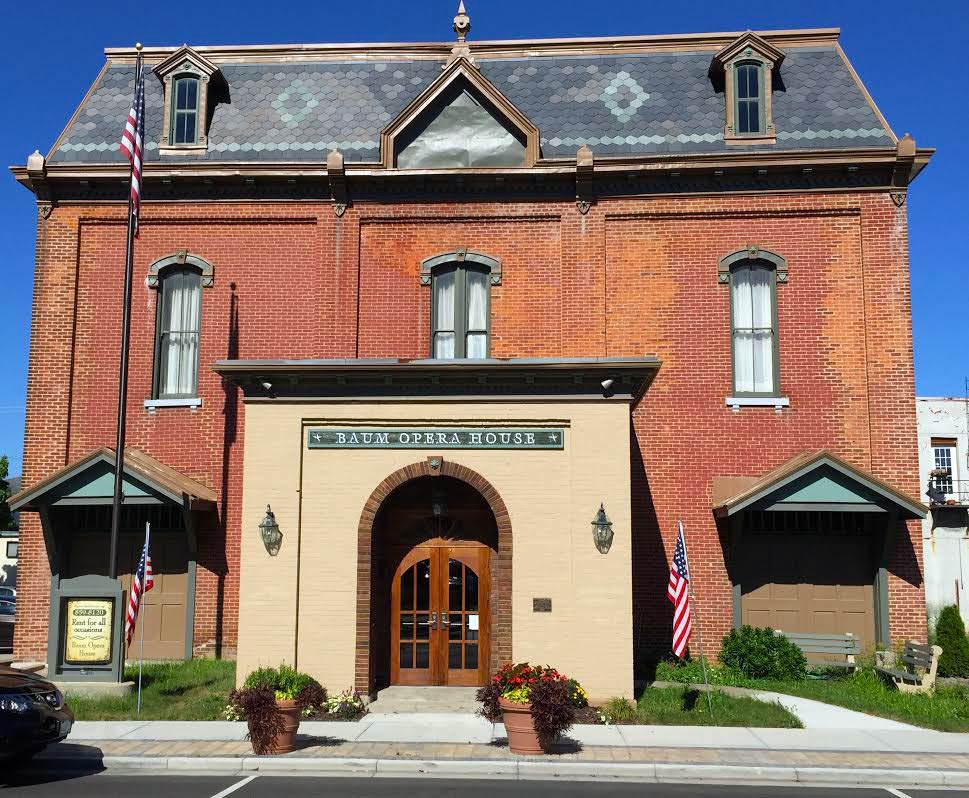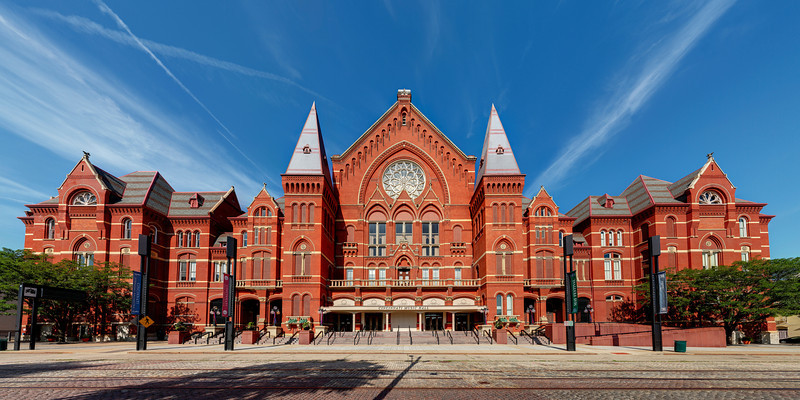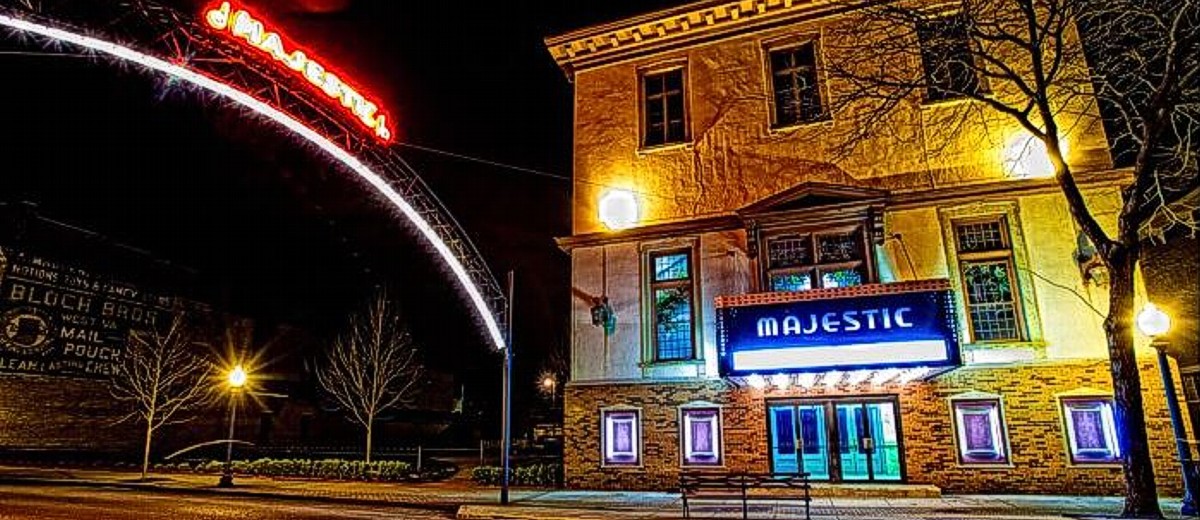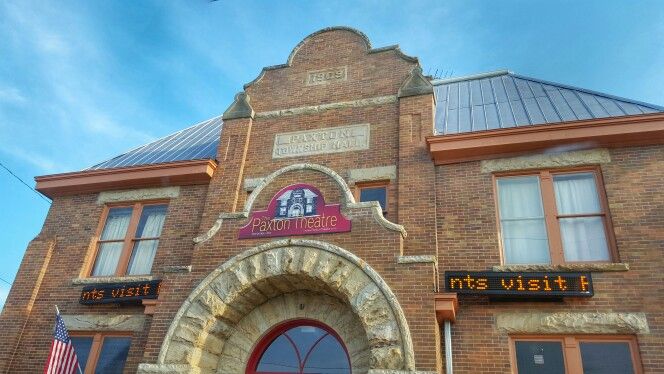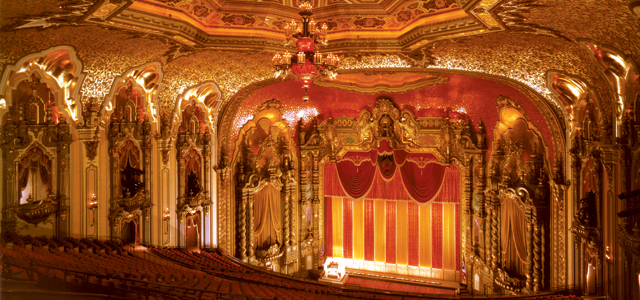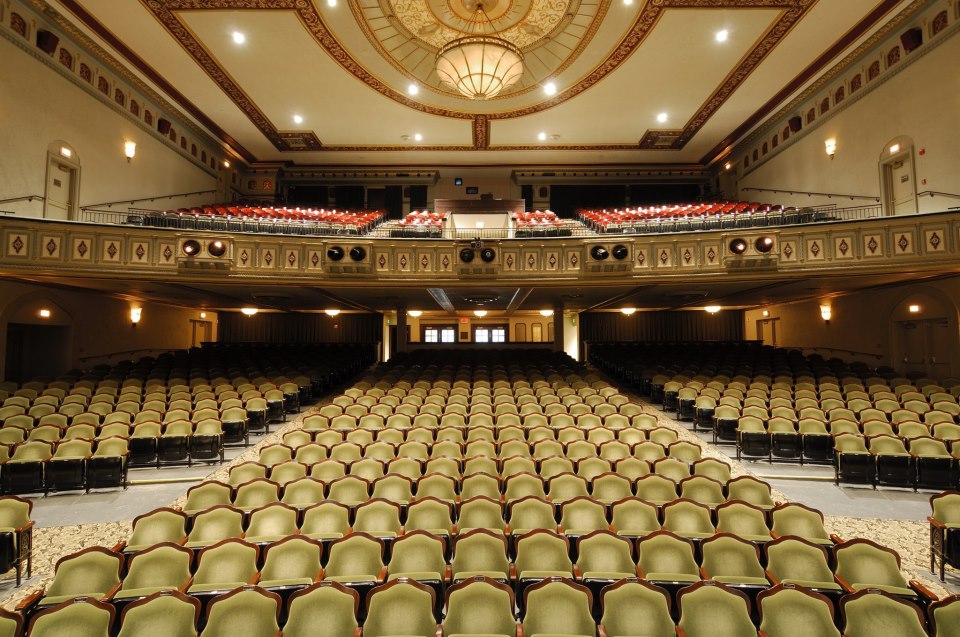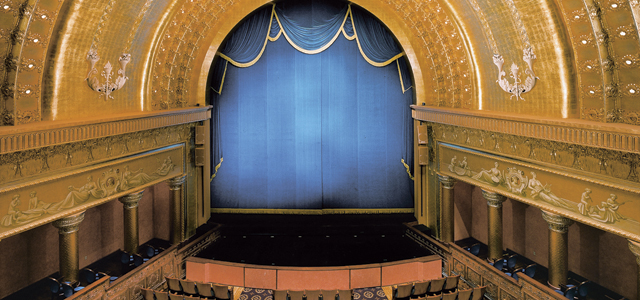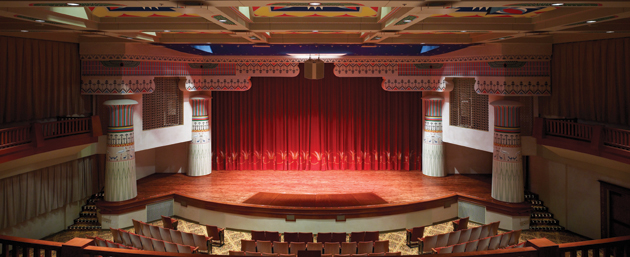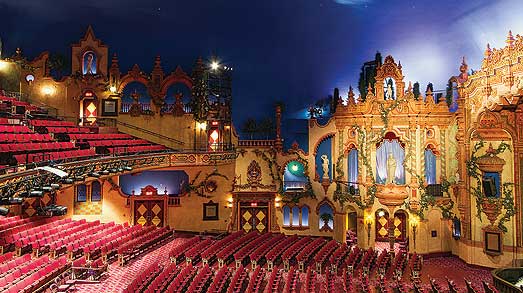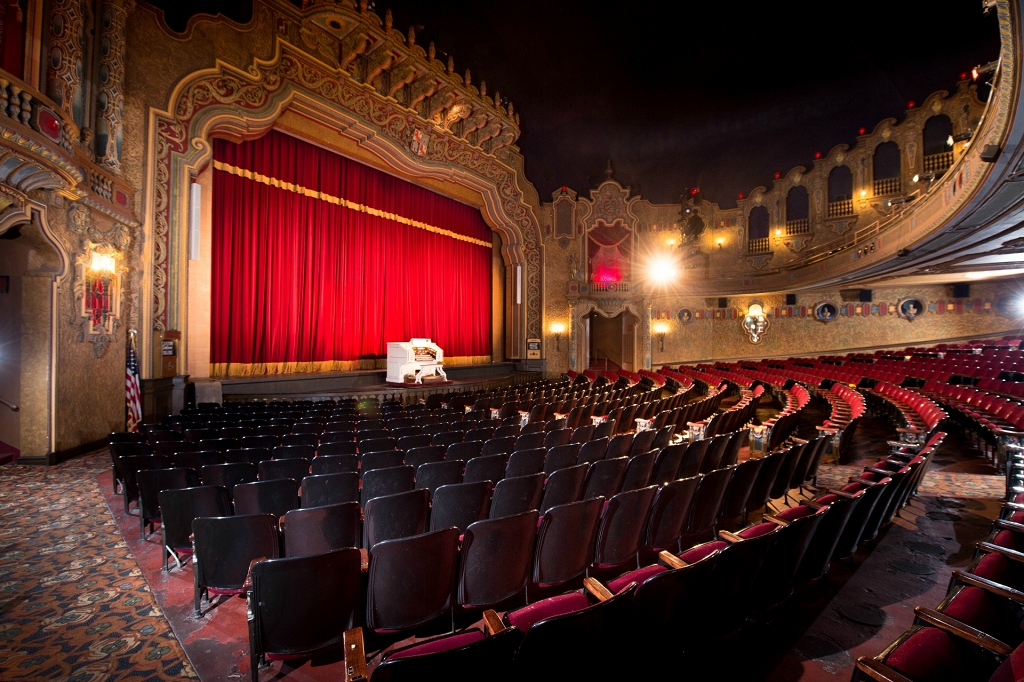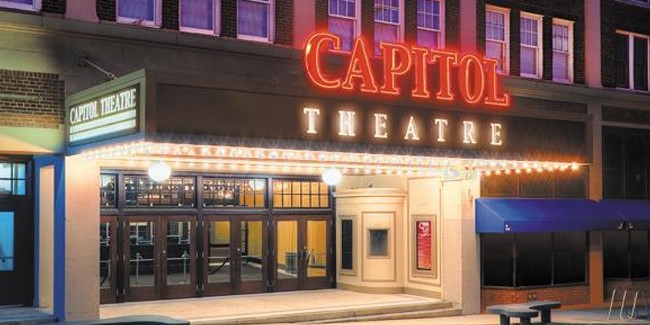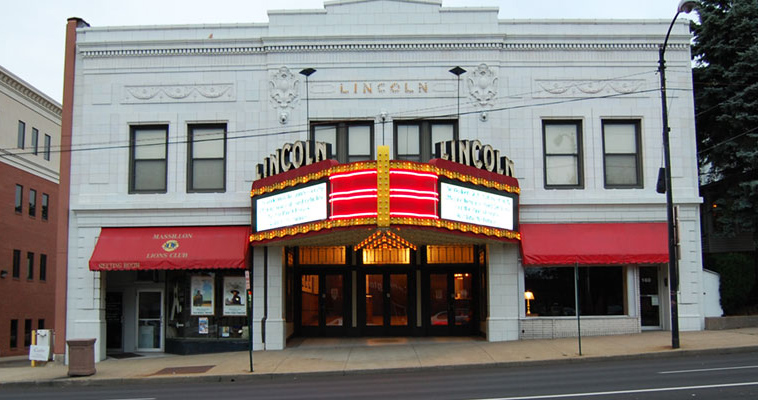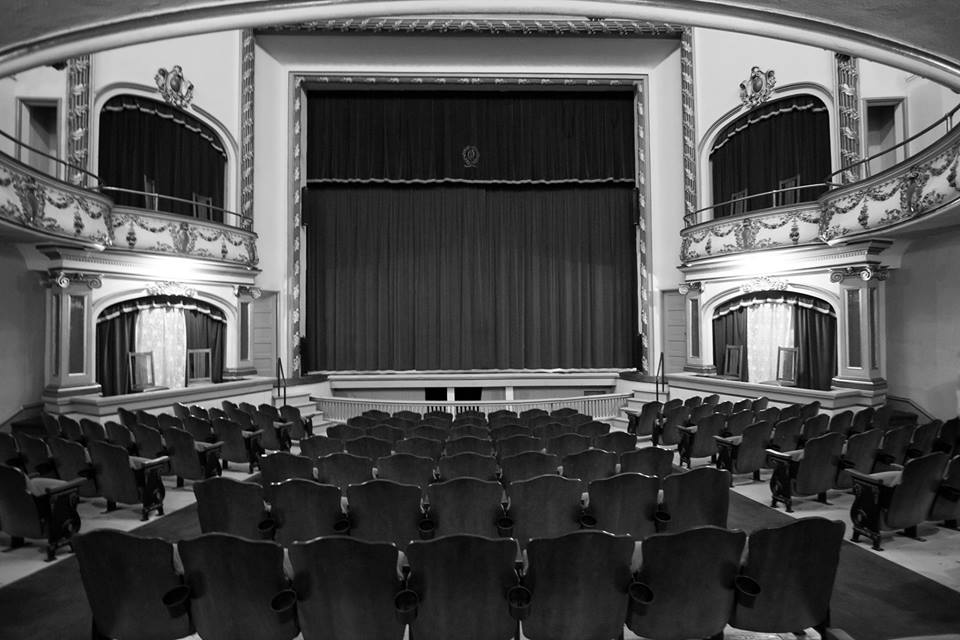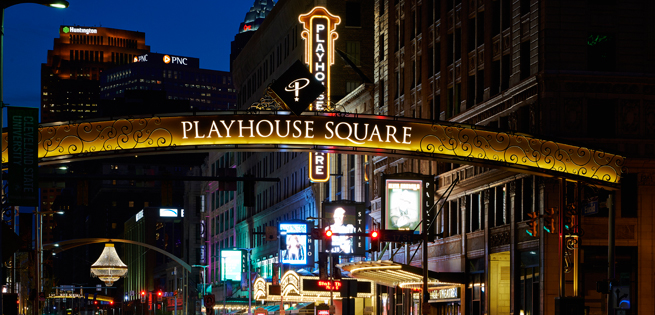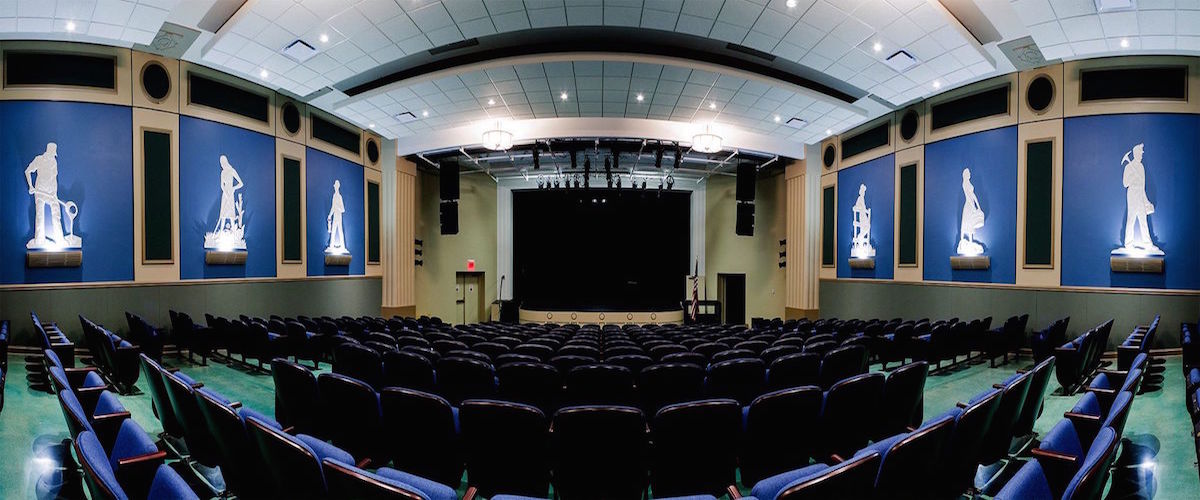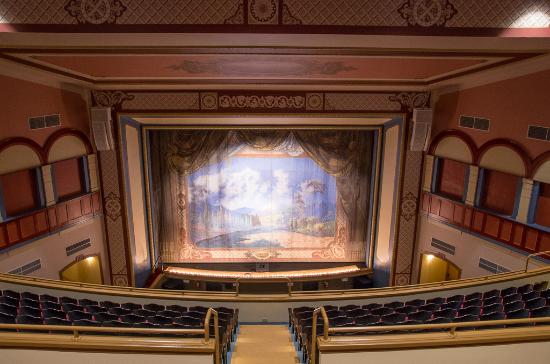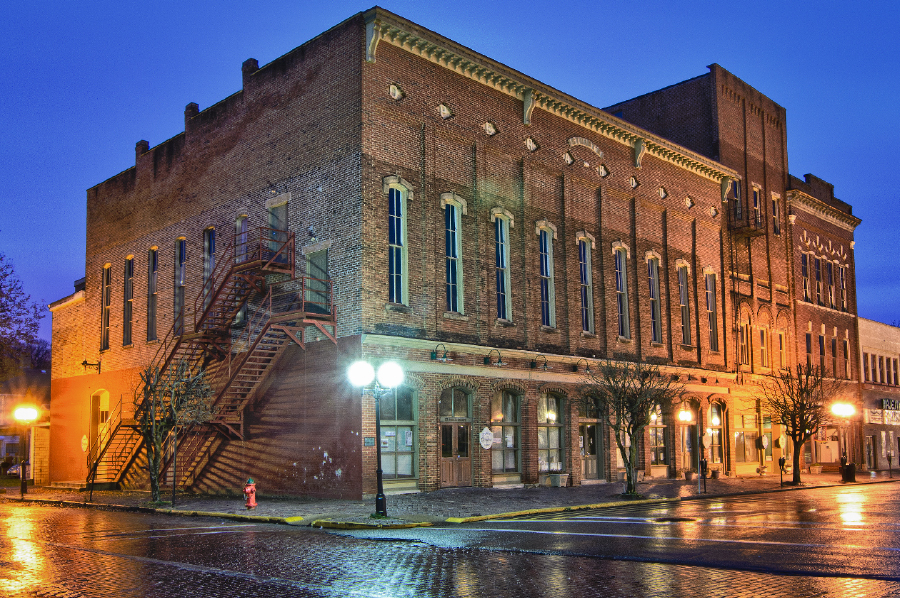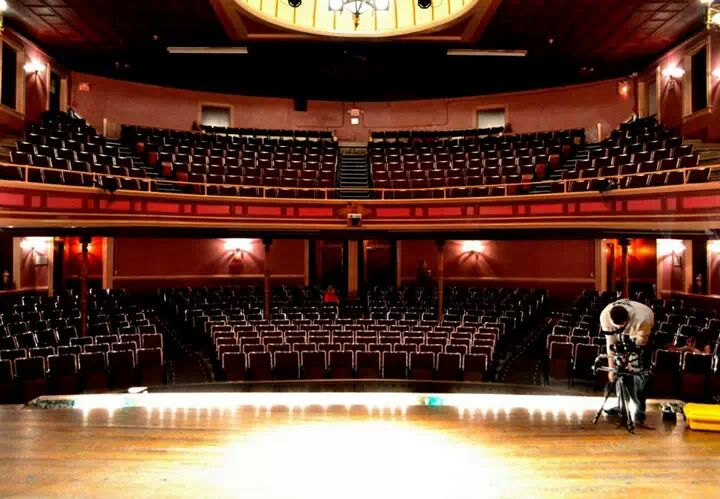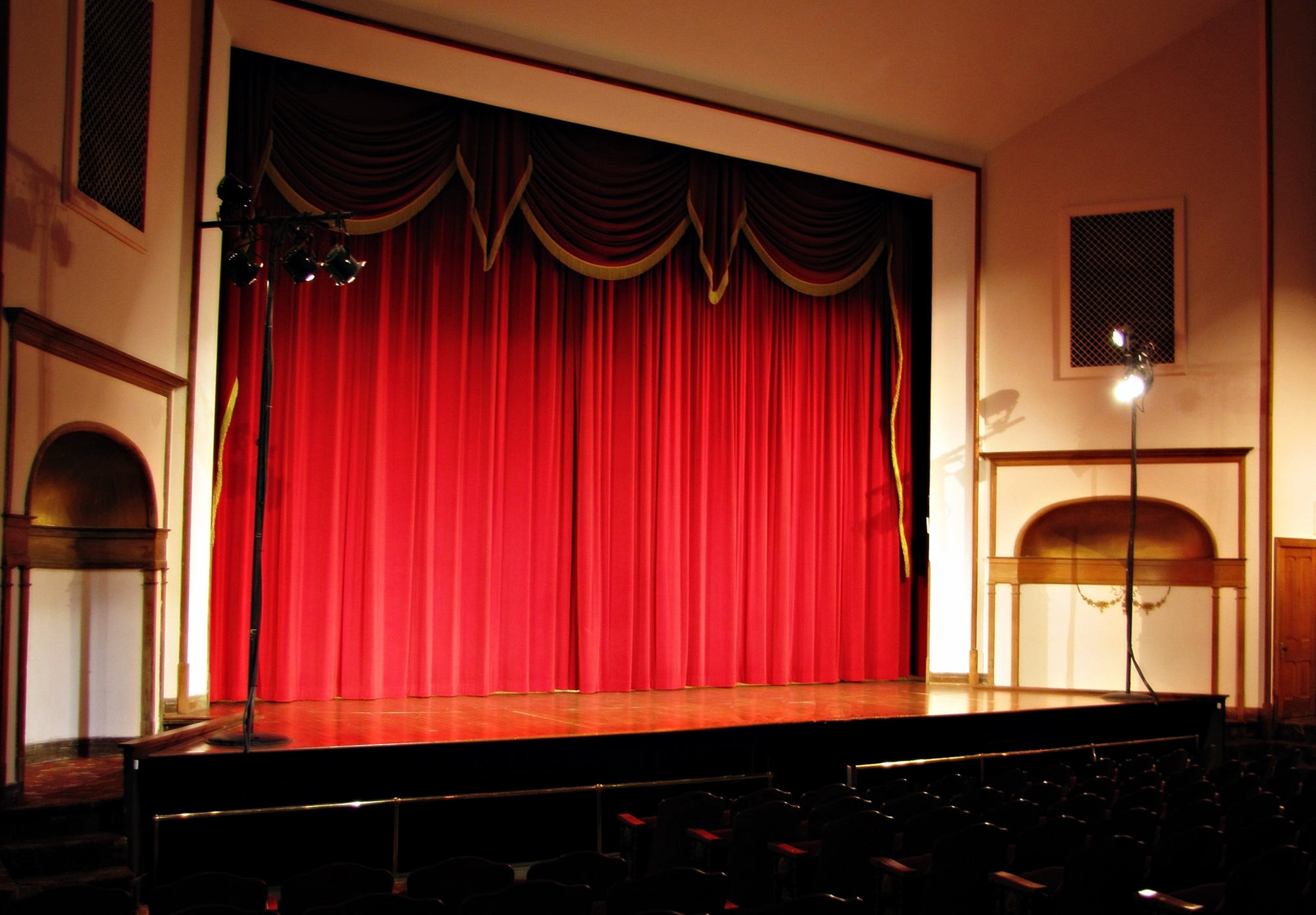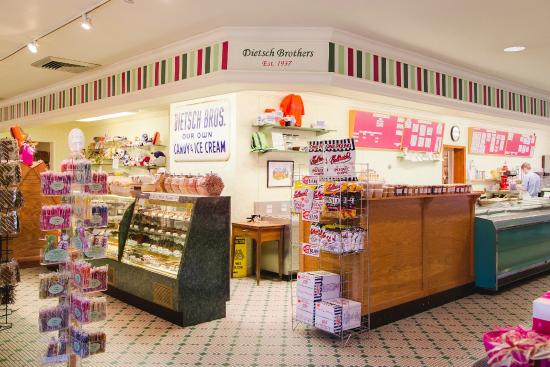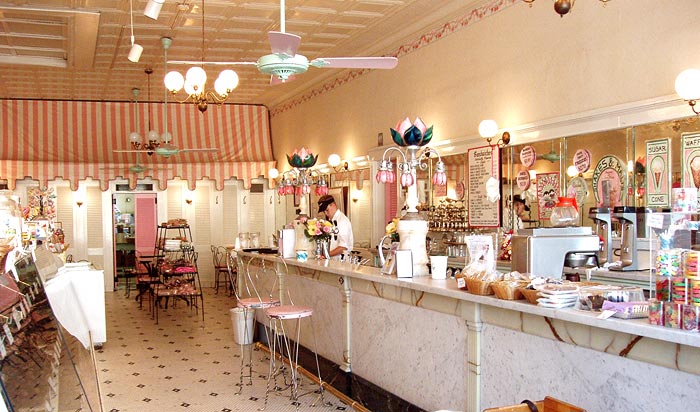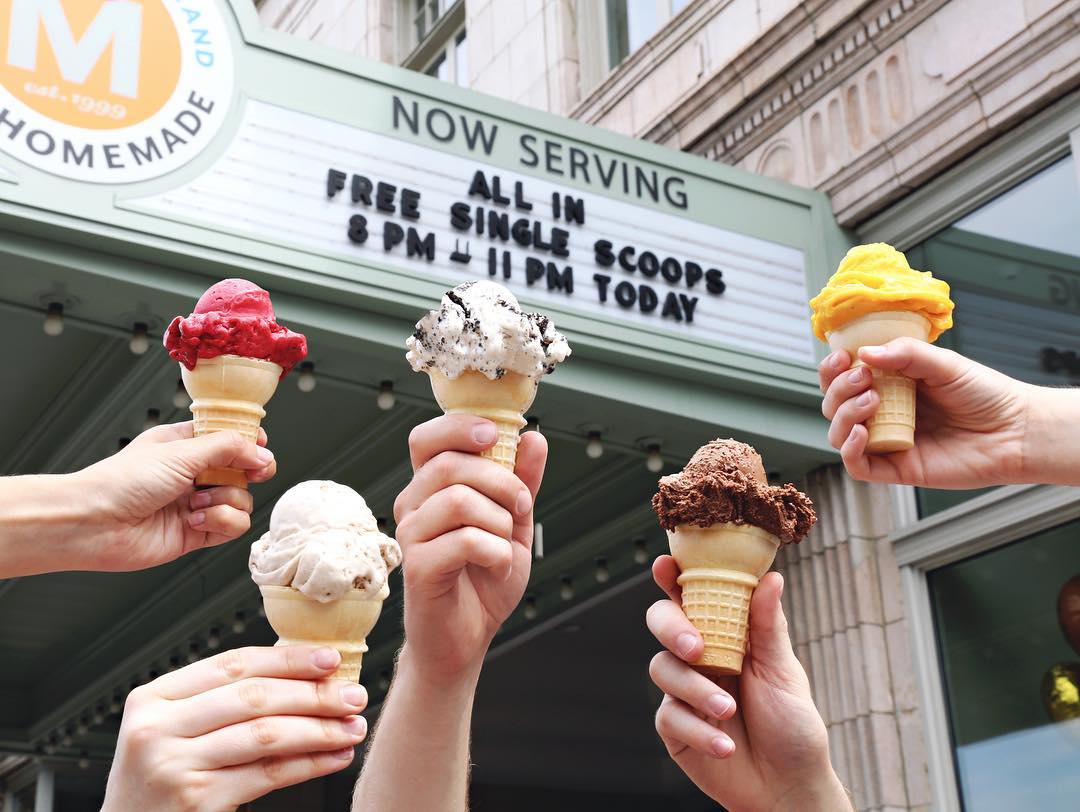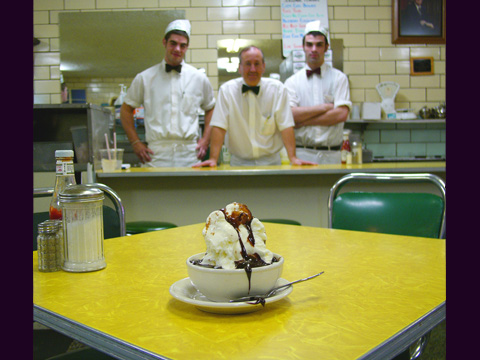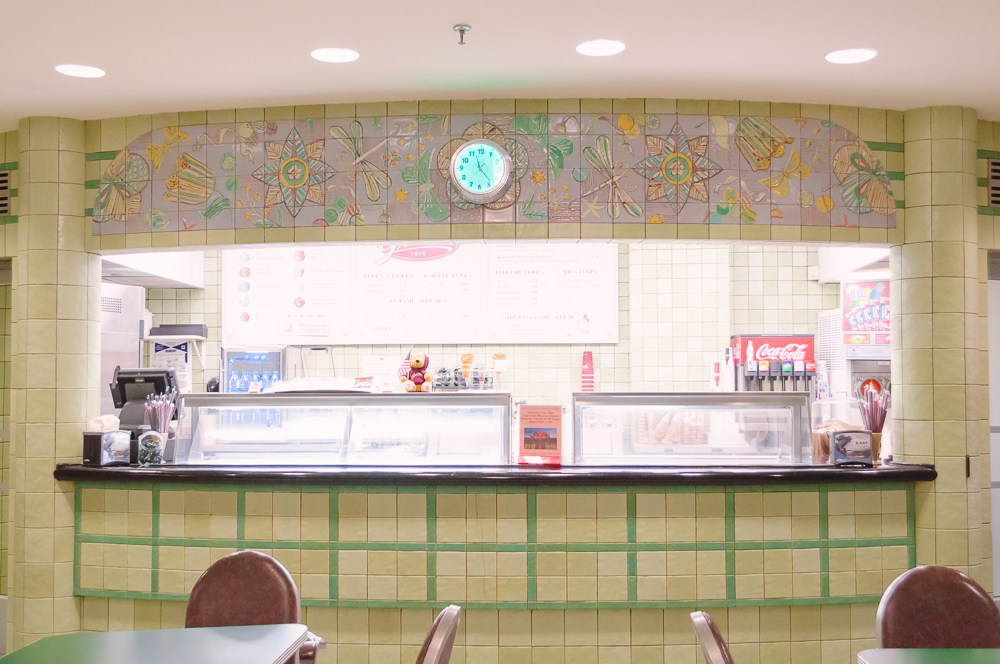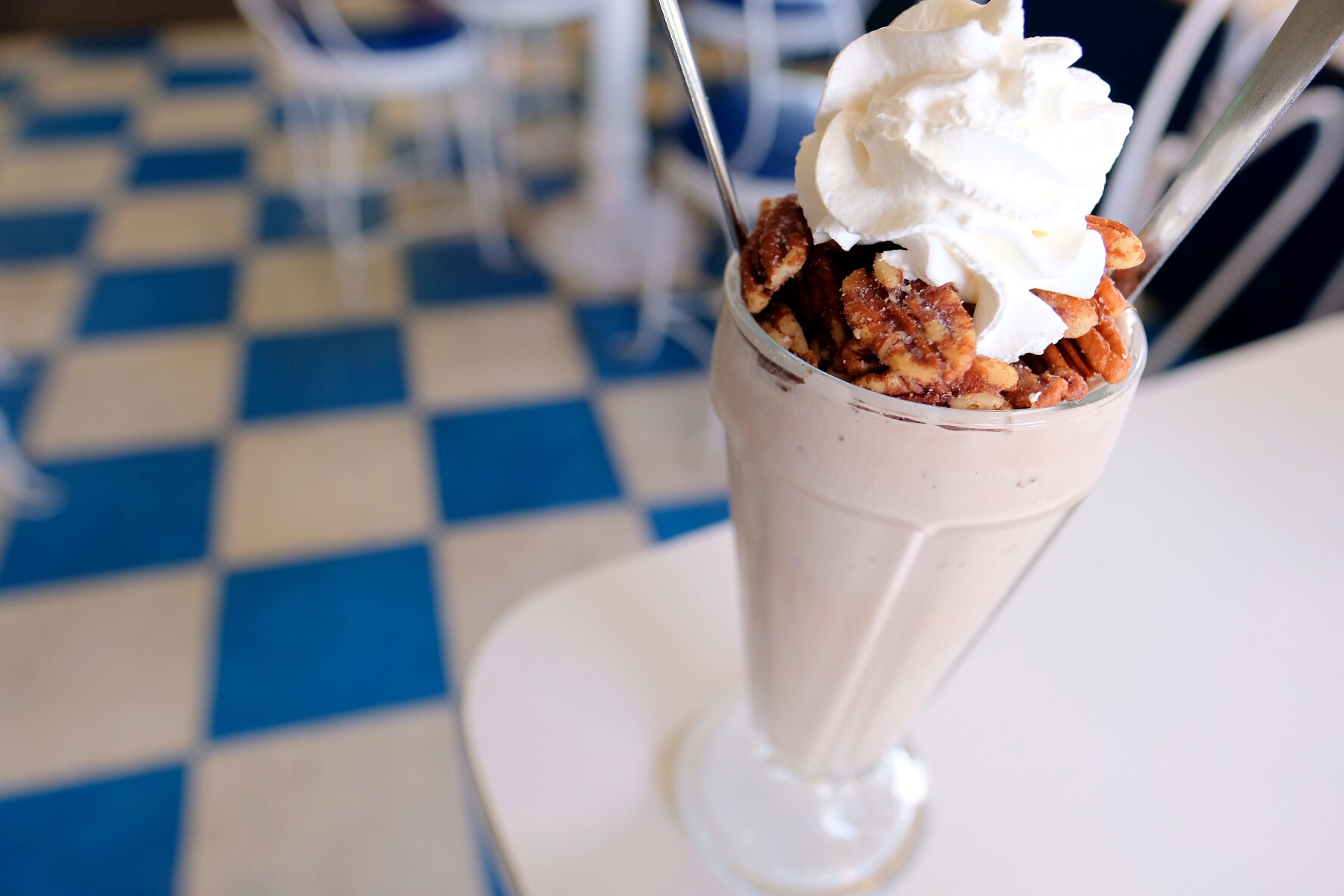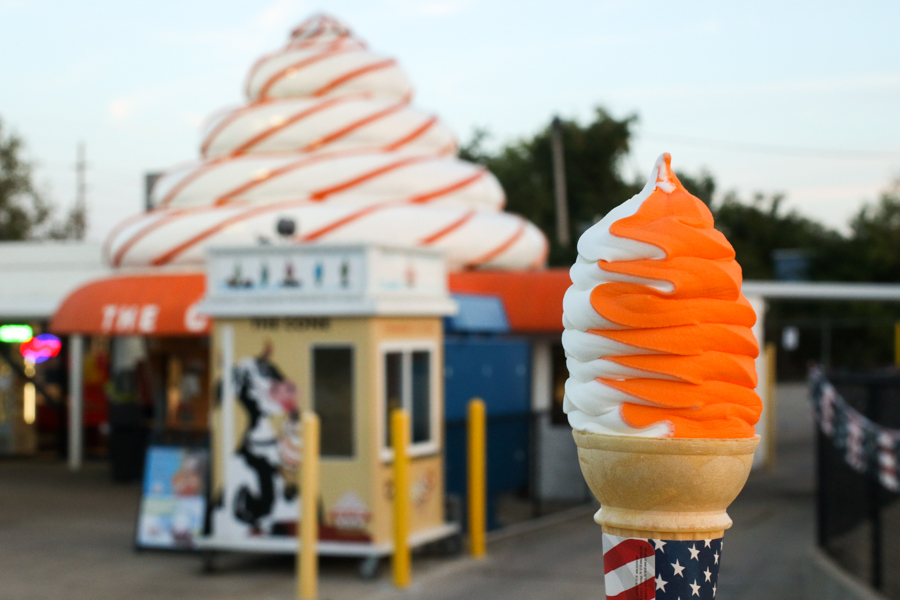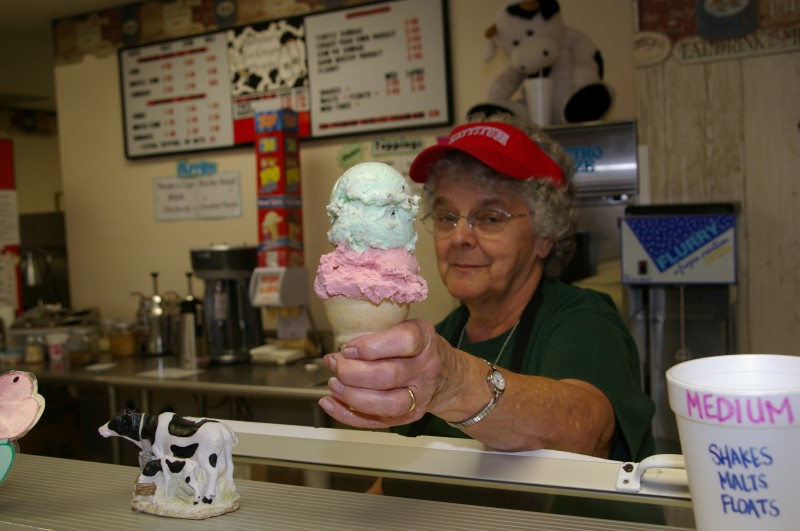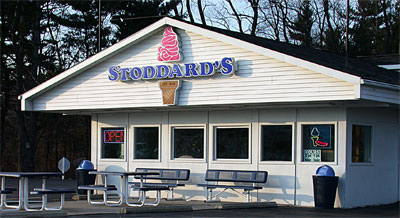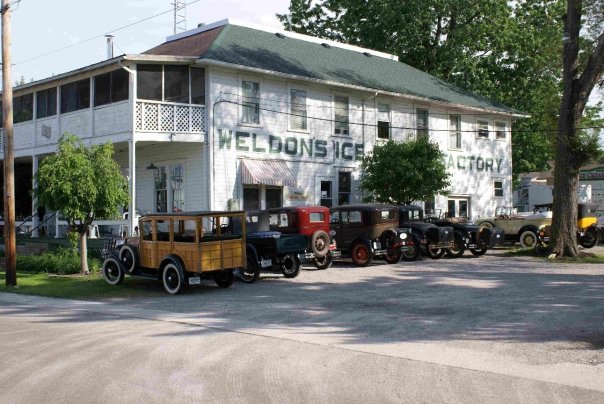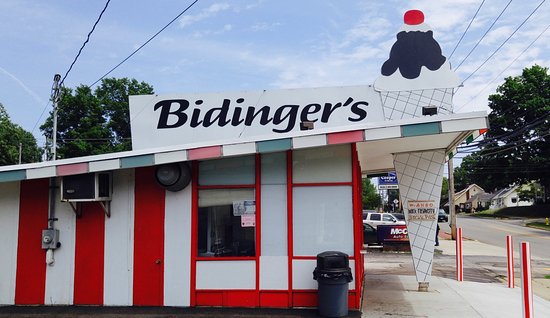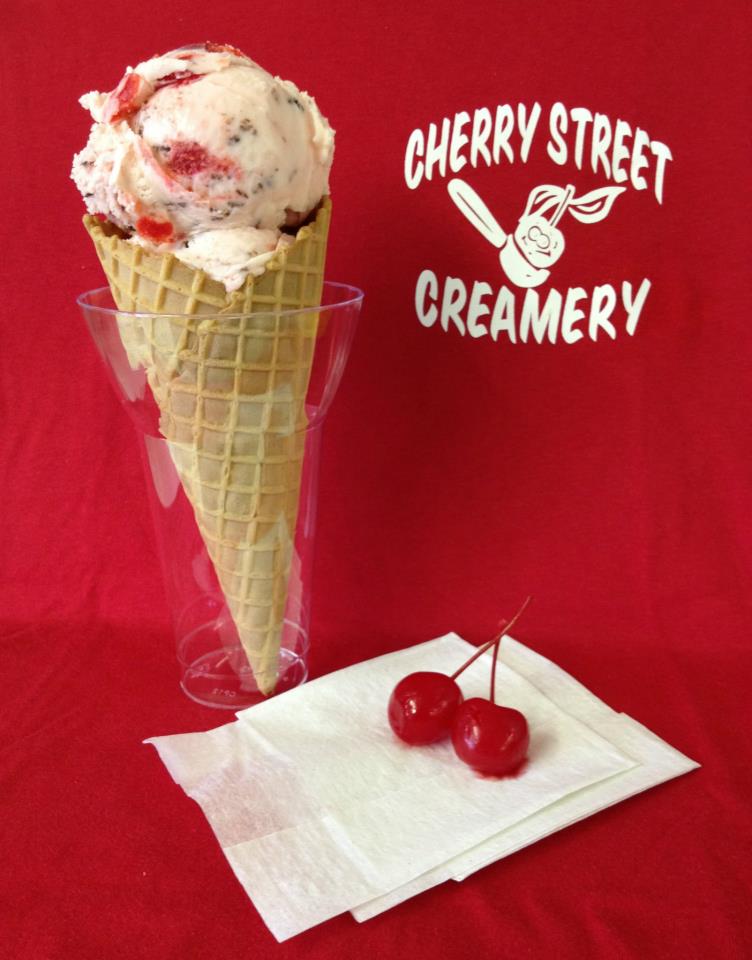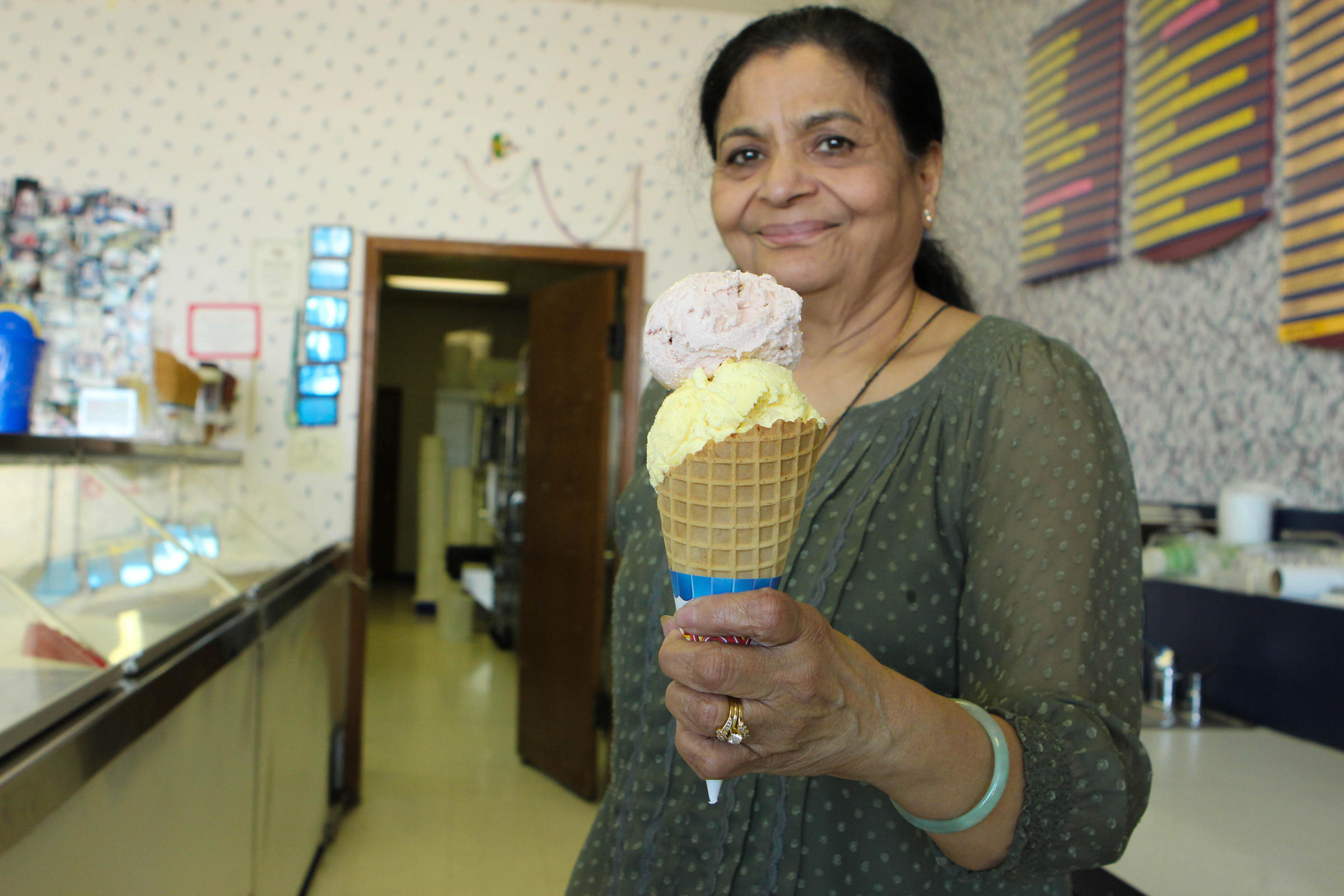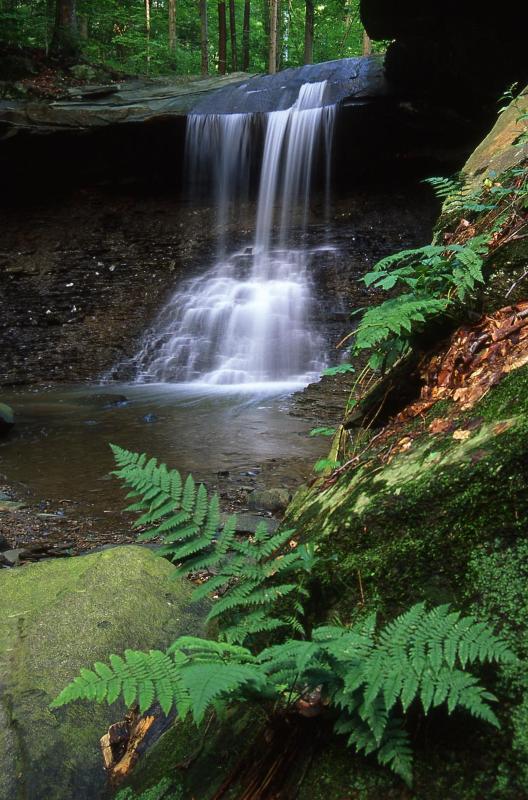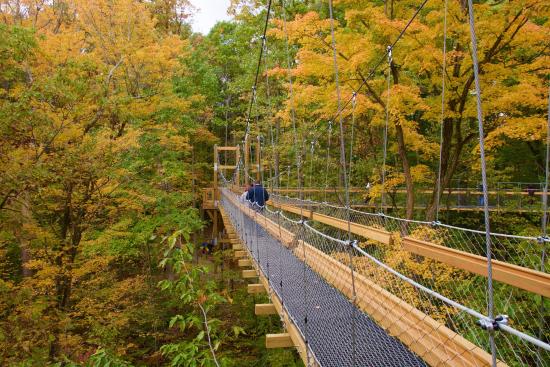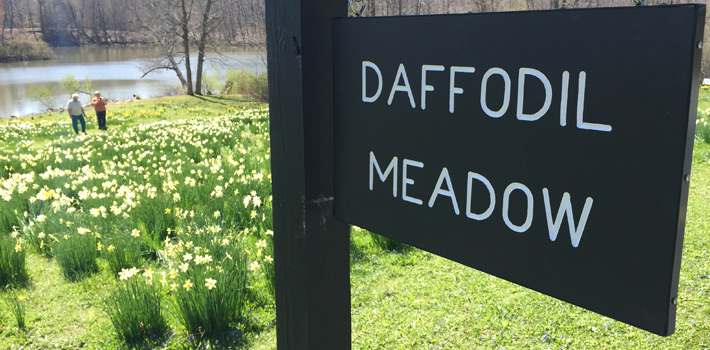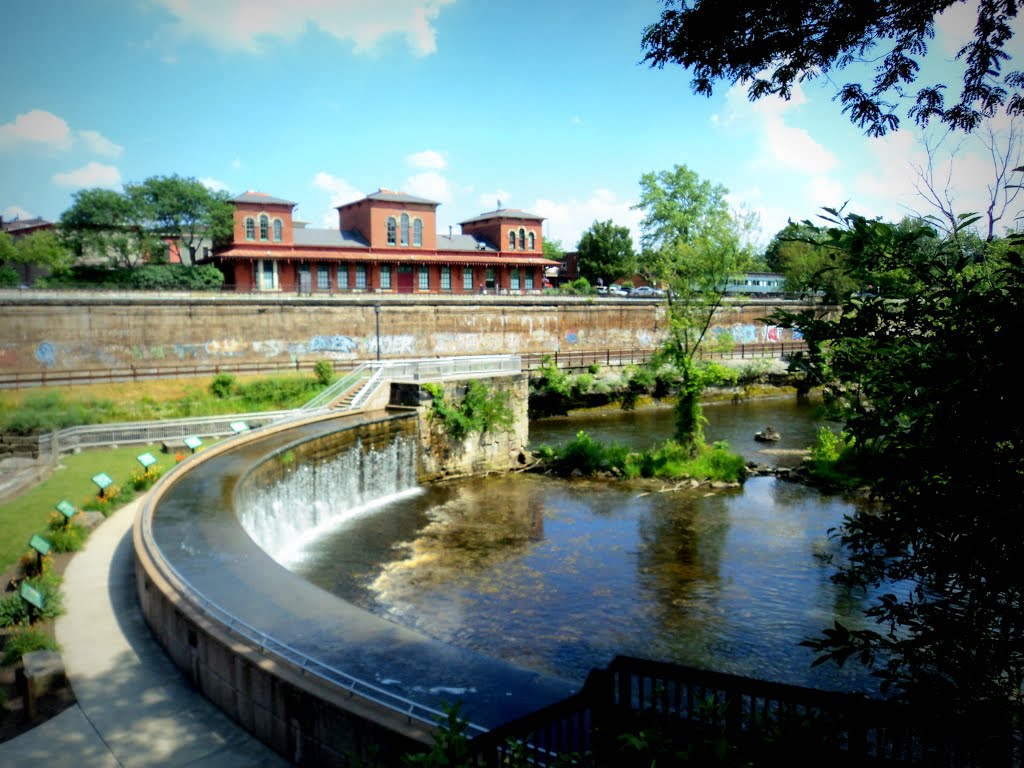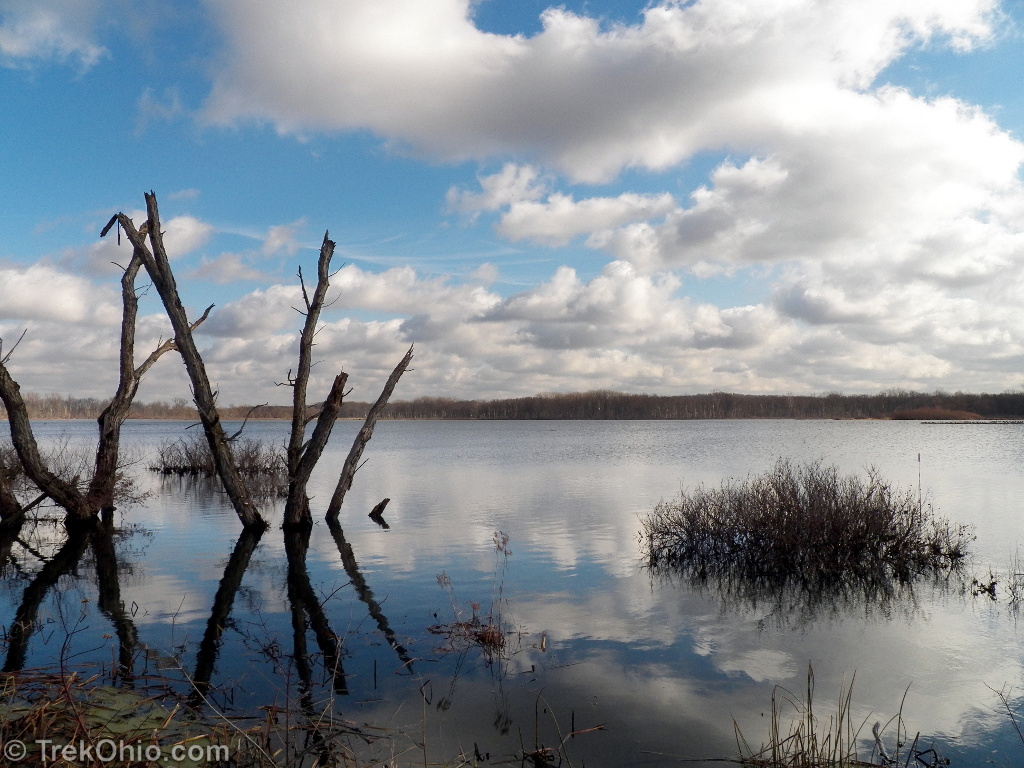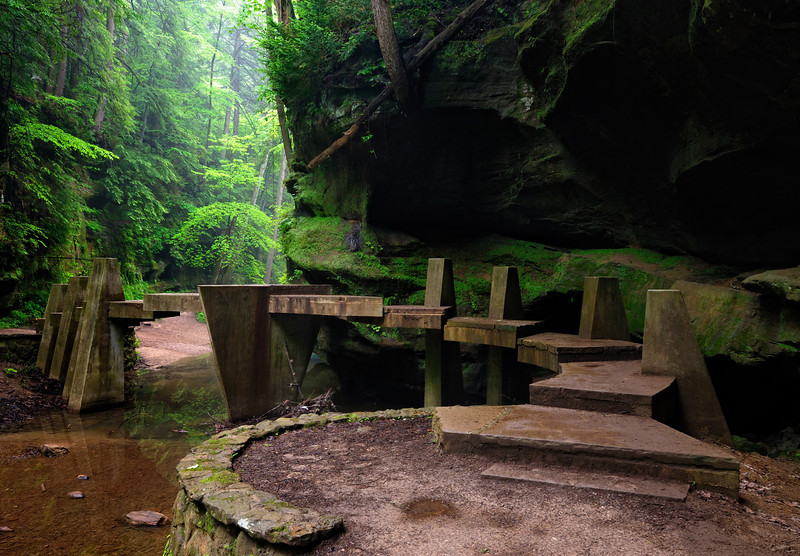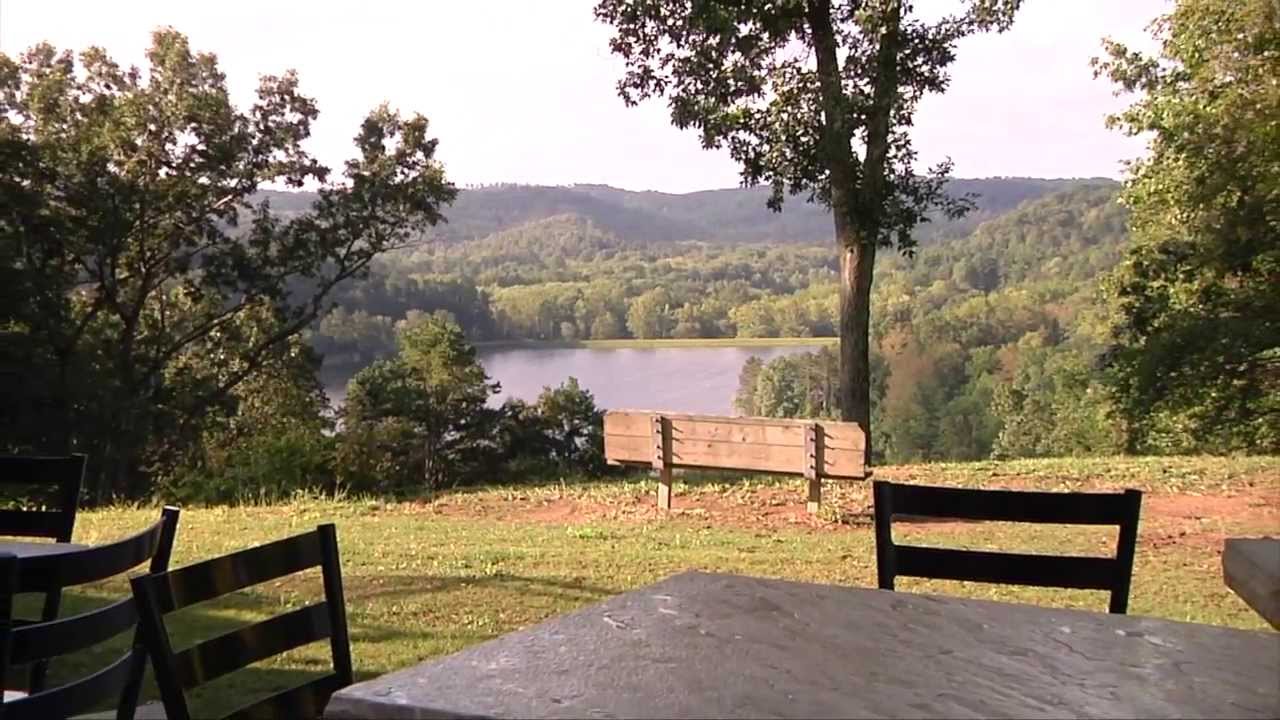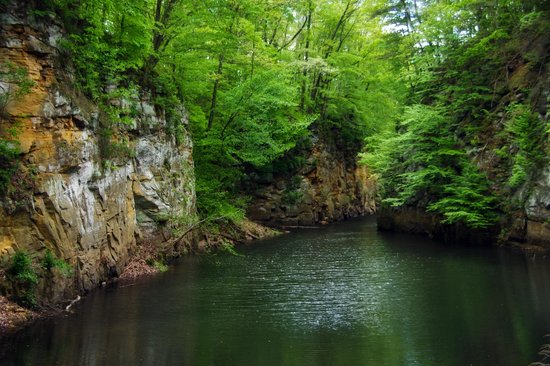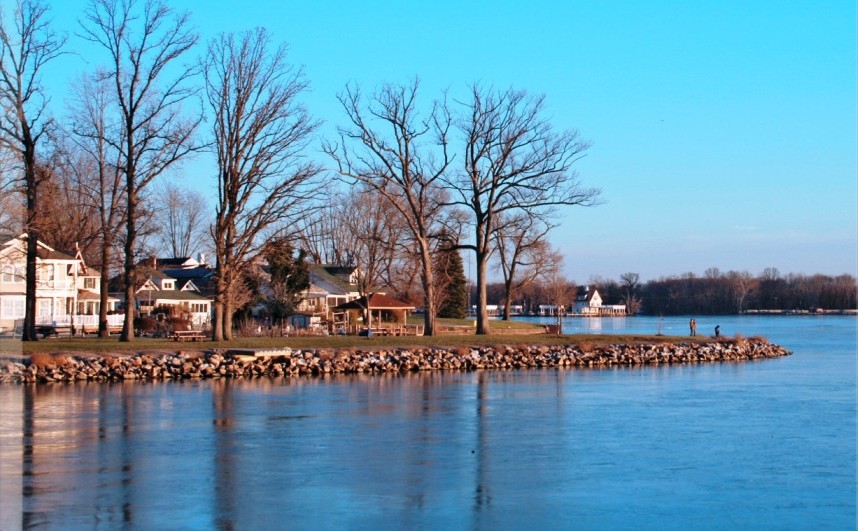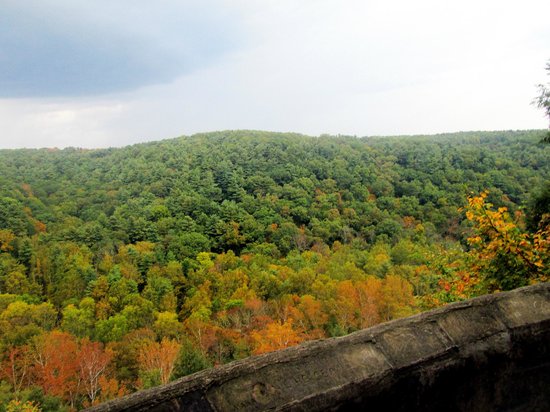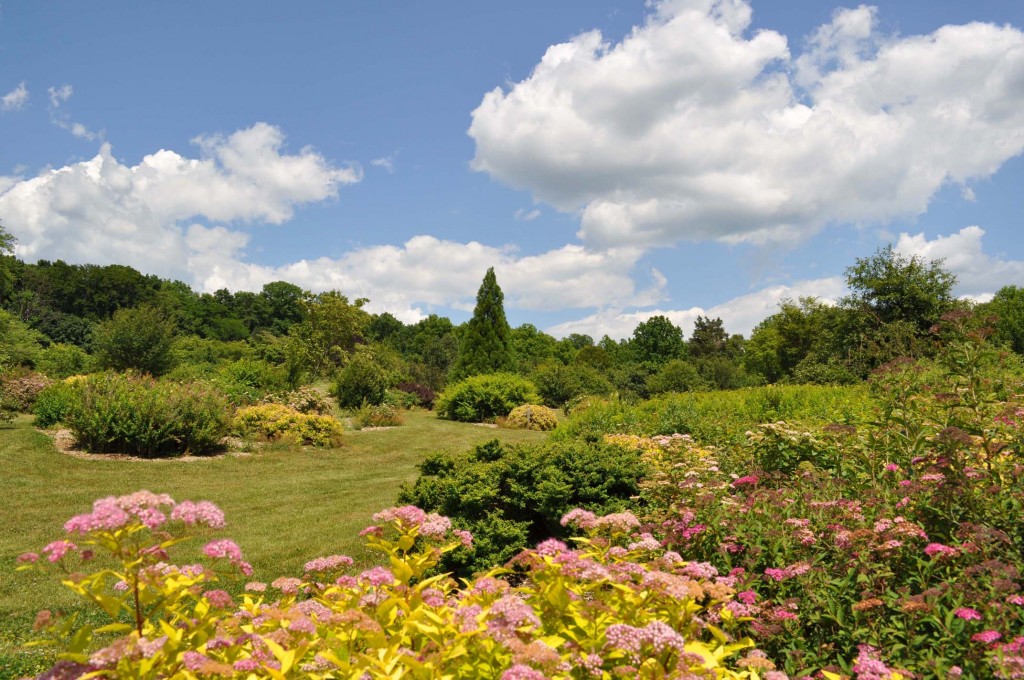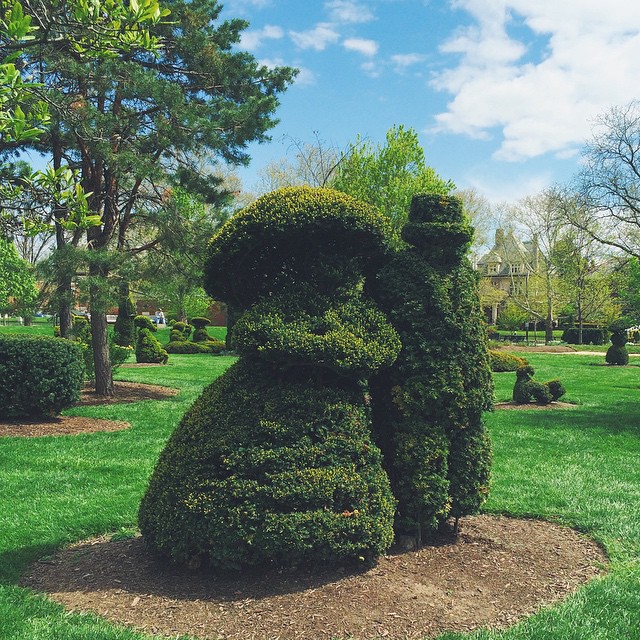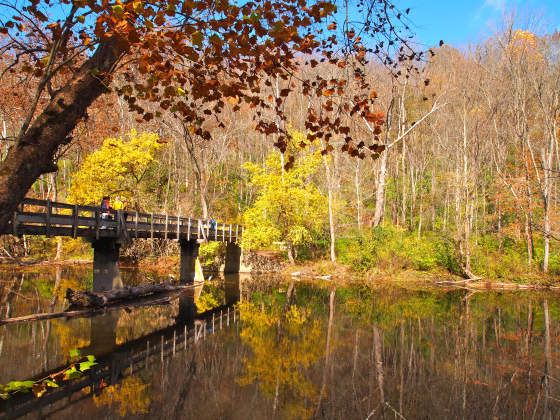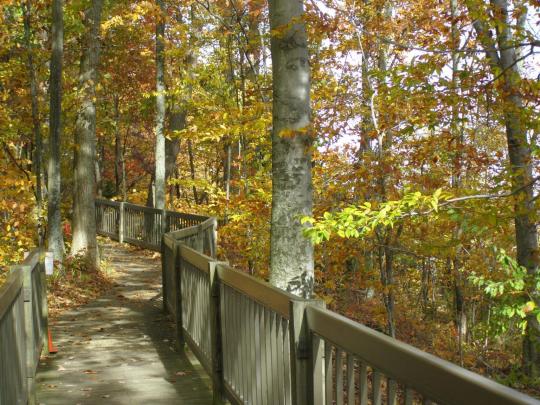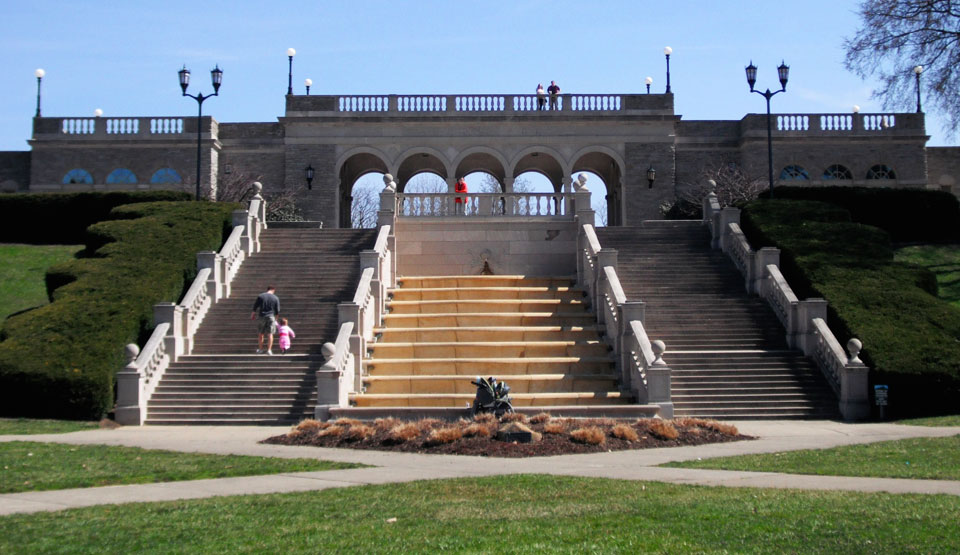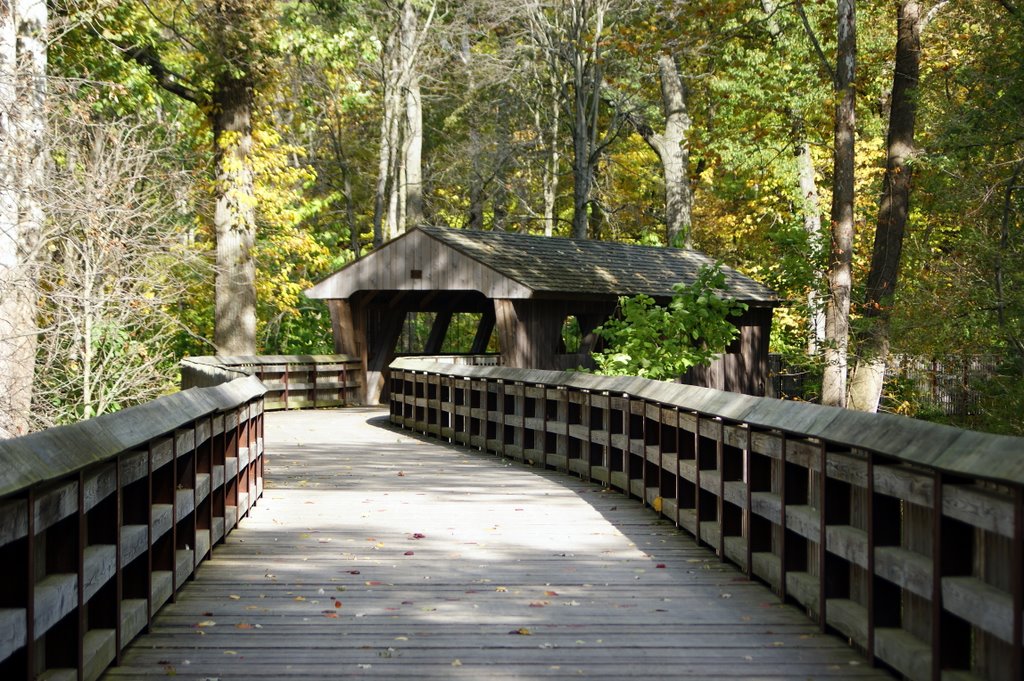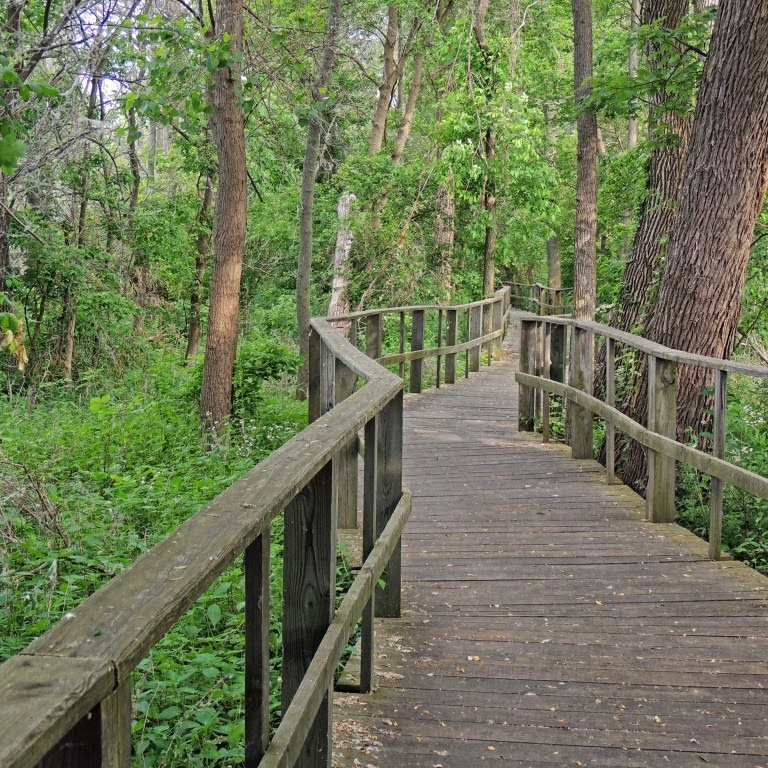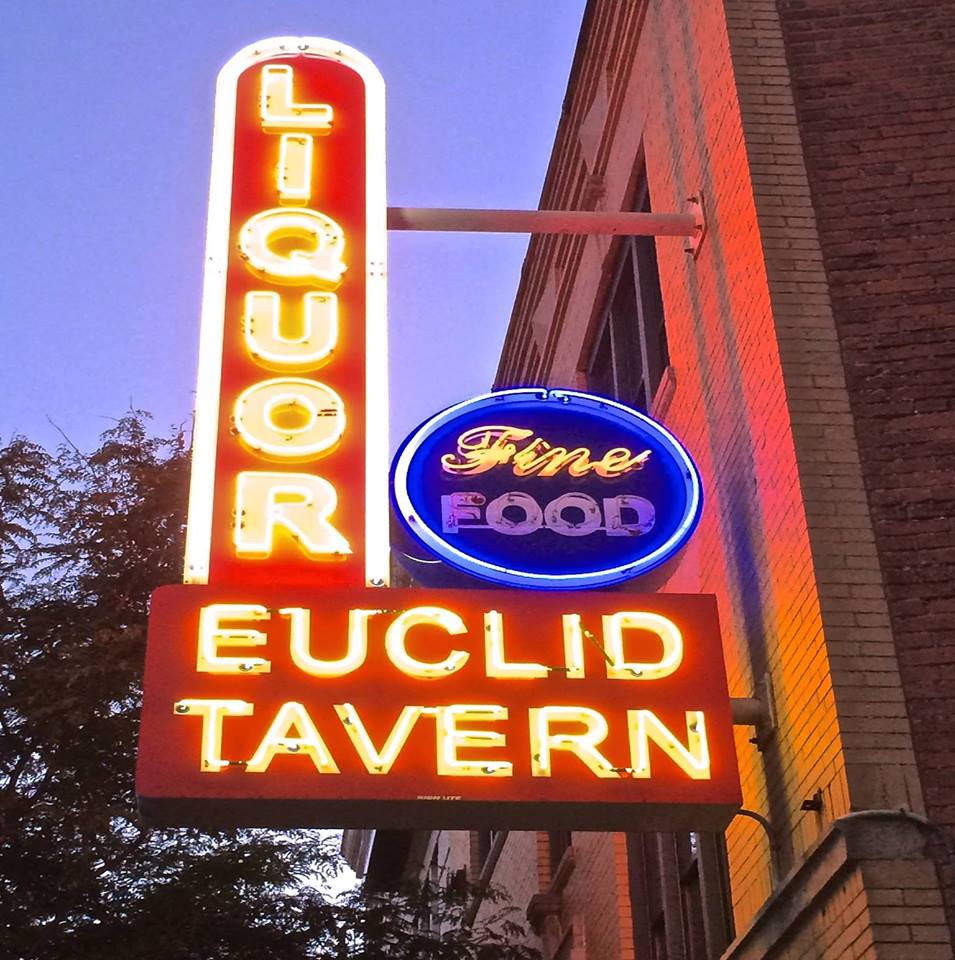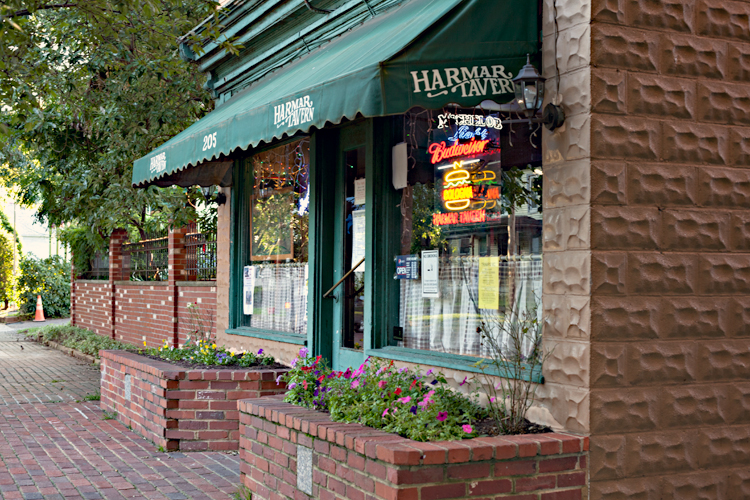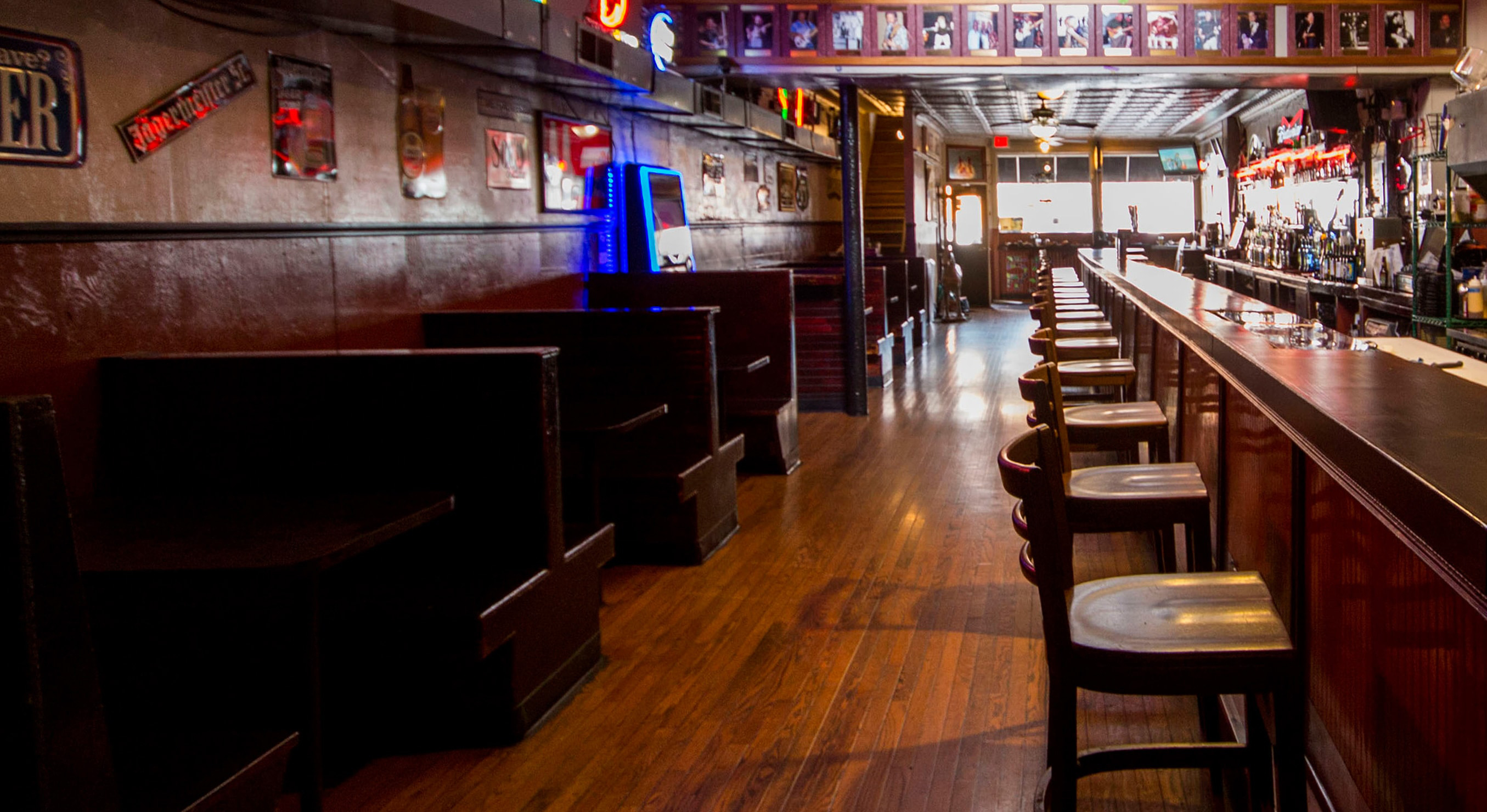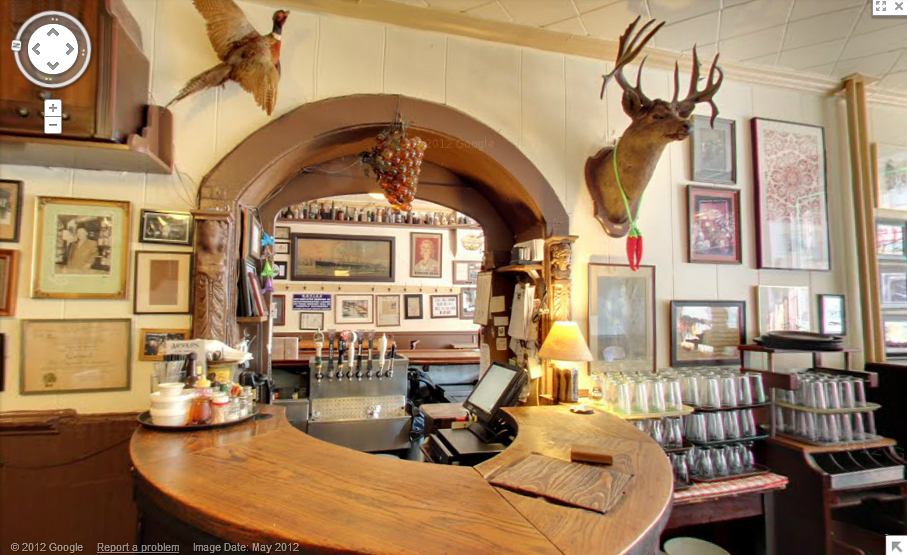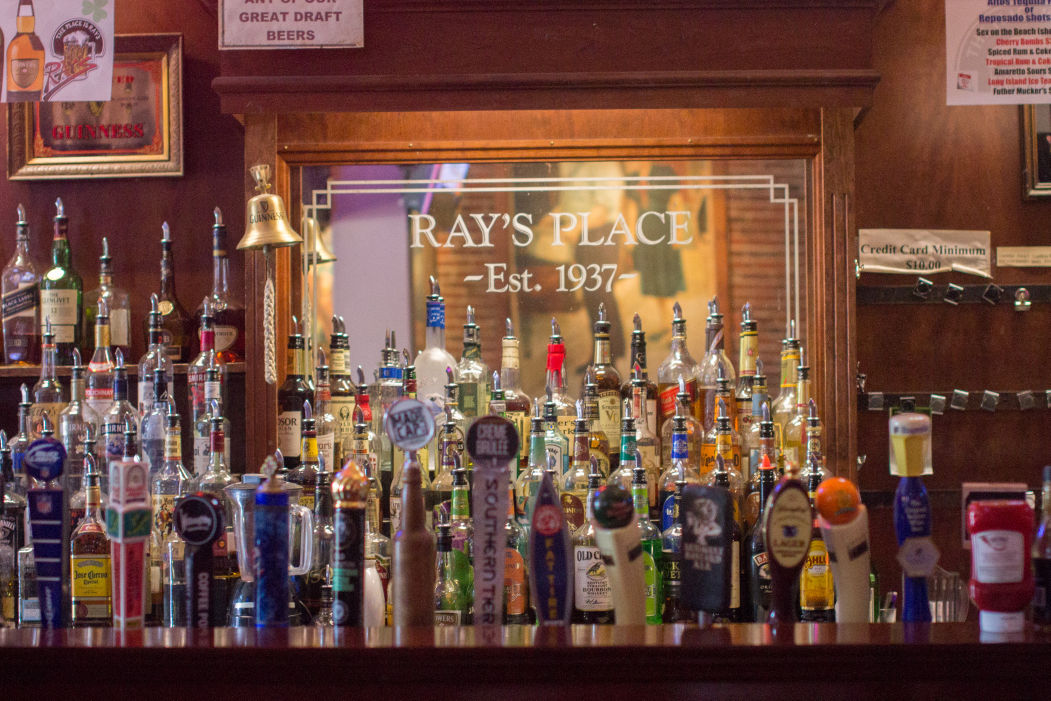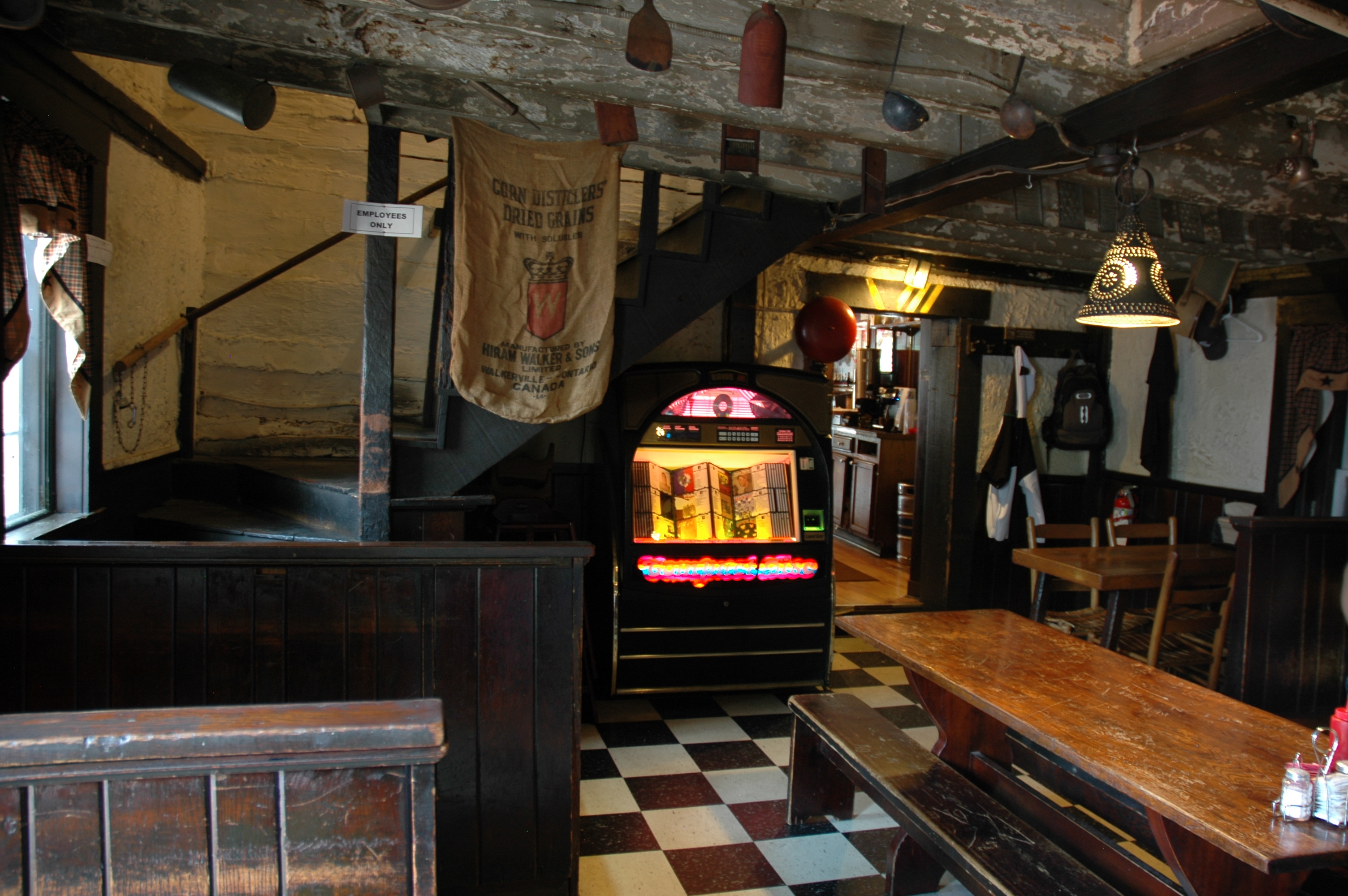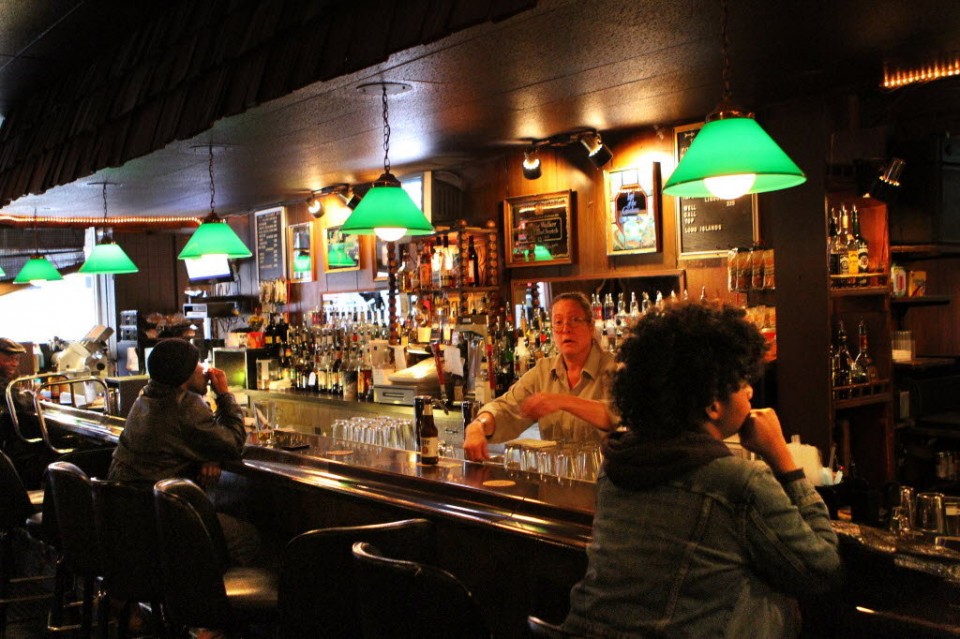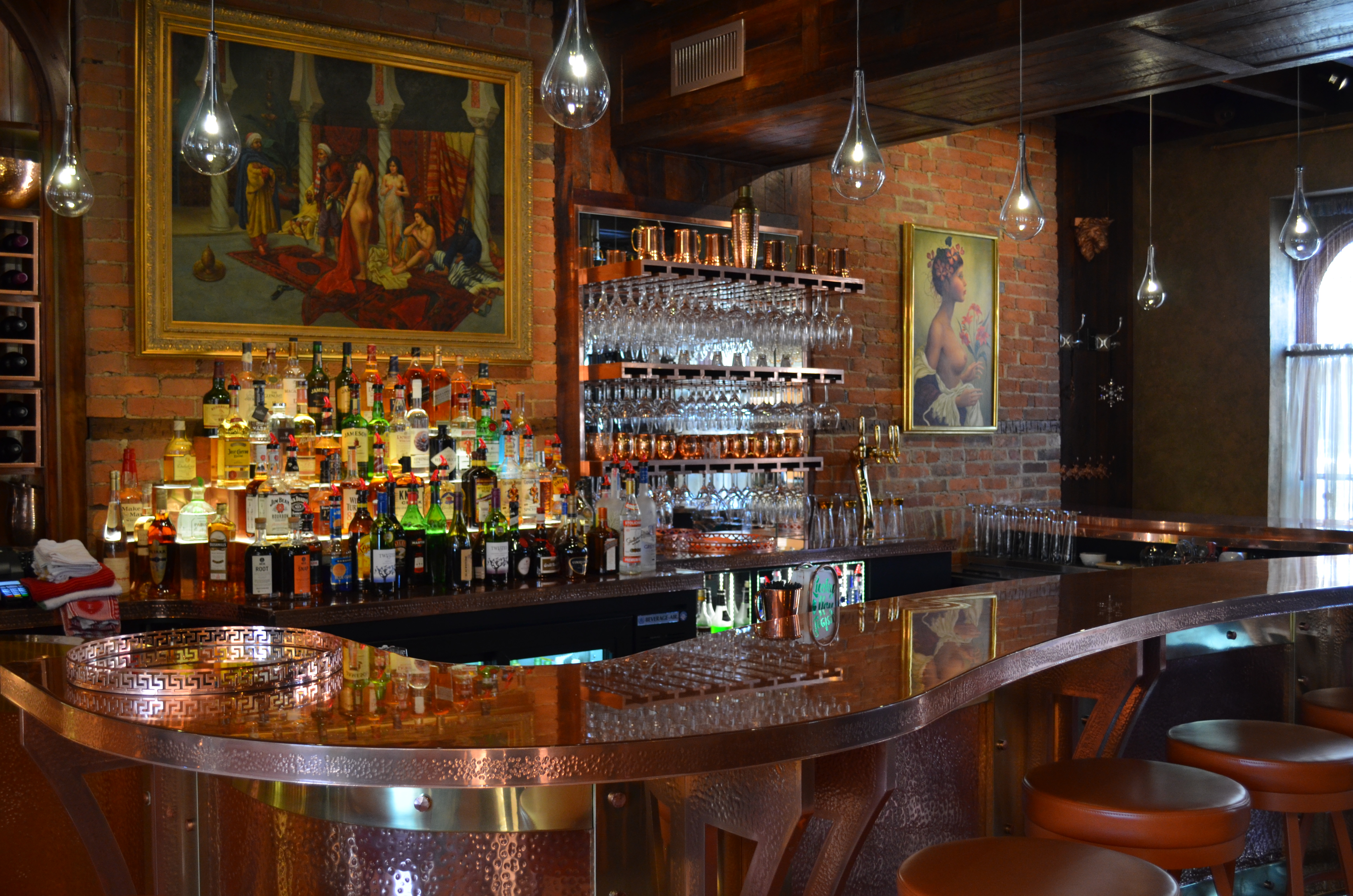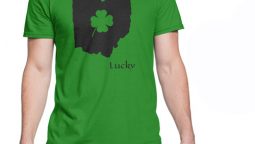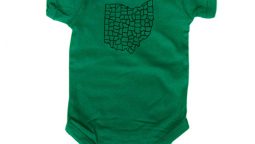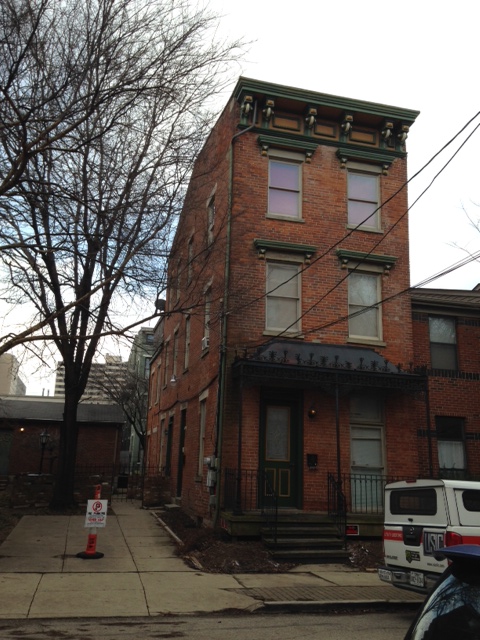Cincinnati Union Terminal Case Study: Completing a Part 1, 2, & 3 for a Historic Preservation Tax Credit Project Webinar
Wednesday, November 13th – 1:00 pm – 2:00 pm
The restoration of the Cincinnati Union Terminal was an extremely complex $200 million dollar historic tax credit project. They did an outstanding job of sheparding the project through the SHPO and NPS review process in completing the Part 1, Part 2 and Part 3.
Join us and learn more about how to focus your work to navigate the process successfully. It takes a team, we will be joined by historic preservation architect Jack Waite, FAIA and Mariangela Pfister, SHPO’s chief HTC reviewer.
The Most Stunning Historic Theatres in Ohio
We love seeing historic theatres restored in Ohio to their former glory and once again a proud centerpiece of the community. Can you believe some of these theatres were once threatened with demolition to make way for parking lots? Thanks to the work of preservationists across the state, you can still visit these stunning Ohio historic theatres.
Northwest
The Ritz Theatre – Tiffin
The Ritz Theatre opened to great fanfare in December of 1928 in downtown Tiffin. The theatre’s design takes elements from the Italian Renaissance, including an artistic interpretation of a Roman villa in the concert hall. The theatre was renovated in 1998, bringing the theatre back to its original charm and elegance.
Today, the theatre offers a variety of performances including live music, classic films, and theatrical pieces. See the current schedule here.
The Holland Theatre – Bellefontaine
The Holland Theatre is one of the more uniquely designed theatres in Ohio. Both inside and out, the theatre transport the visitor to Holland, with classic Flemish design, including a dutch village-scape in the interior. The theatre opened in 1931 as The Schine’s Holland Theatre. While some alterations have occurred over the years, much of the original splendor of the theatre is intact and ready to wow.
With numerous performance throughout the year, you will have plenty of opportunities to visit the theatre. See the current schedule here.
The Sandusky State Theatre – Sandusky
The Sandusky State Theatre opened in 1938 as The Schine Theatre with a showing of Night Watch. The theatre fell into disrepair in the 1960s, but was extensively renovated in 1990. Theatre hosted a performance of Michael Bolton to celebrate its 75th anniversary. For its centennial anniversary, the Sandusky State Theatre hopes to be completely renovated to its original splendor.
The Sandusky State Theatre offers a wide variety of programming. See their upcoming events here.
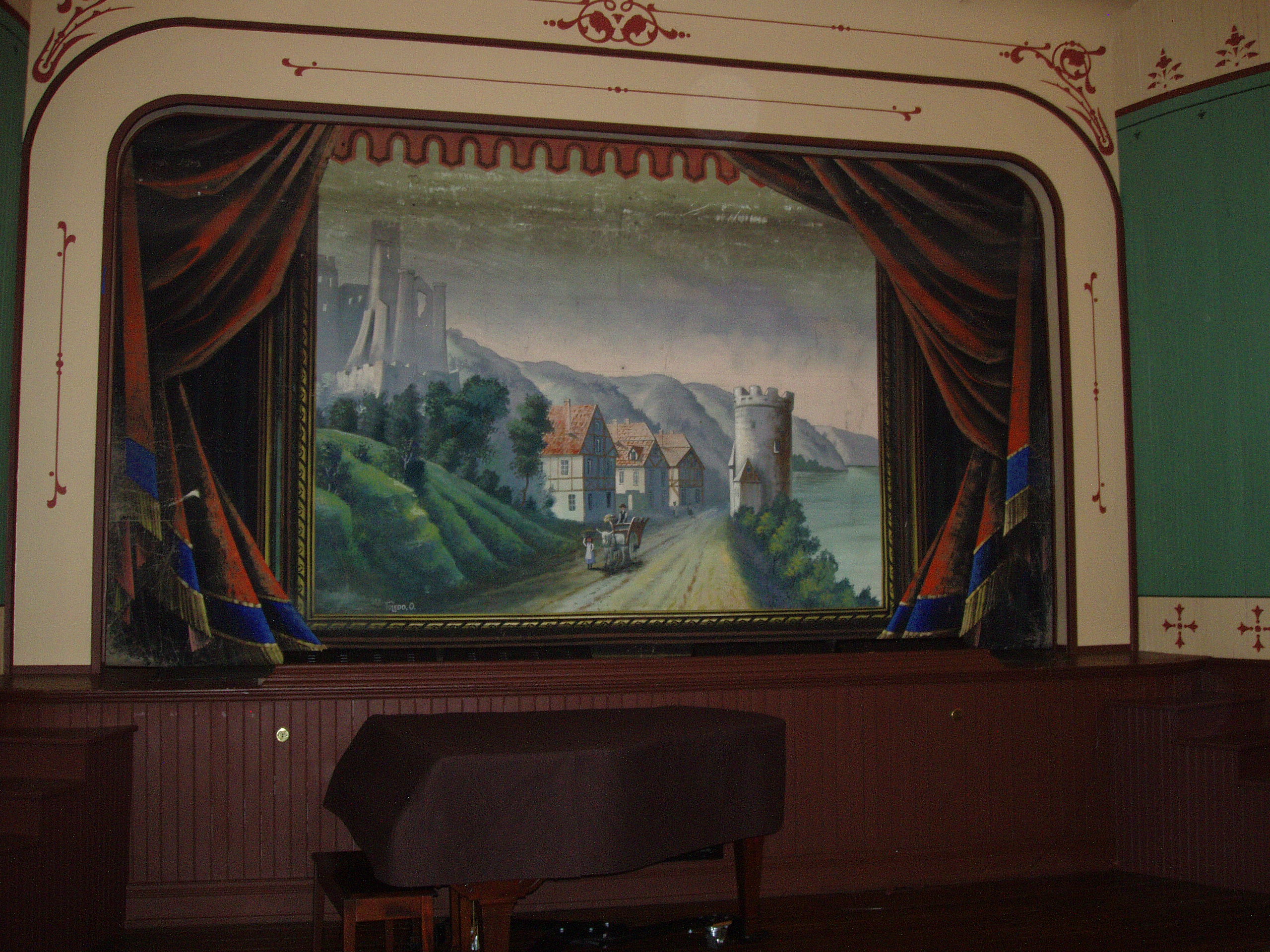
The Pemberville Opera House – Pemberville
Resting on the second floor of the Pemberville Town Hall, the Pemberville Opera House opened to Jeptha’s Daughter, an adaptation of the Biblical story. The opera house was wildly popular in before WWII, especially after electric lights were added in 1899. Following years of neglect, renovations were started in 1998 to return the opera house to use.
Today, the Pemberville Opera House hosts several productions every year. See their current schedule at the link above.
The Huber Opera House & Event Center – Hicksville
The Huber Opera House started life as Mackey’s Brick Hotel in downtown Hicksville in 1882. After a fire destroyed the Pettit Opera House, the hotel was converted to an opera house in 1895. The opera house remained the center of community life well into the 1970s, before it became rundown. In 1999, a coalition of community members and businesses purchased the opera house, giving it a new lease on life.
You have plenty of opportunities to visit The Huber Opera House. See their current schedule here.
Southwest
The Victoria Theatre – Dayton
The Victoria Theatre in Dayton traces its roots to The Turner Opera House, opened in 1866. The Turner only existed a few years before being destroyed in a fire. After the opera house was rebuilt, it underwent a series of name changes: The Music Hall in 1871, The Grand Opera House in 1885, The Victoria Opera House in 1899, and The Victoria Theatre in 1902. After surviving the Flood of 1913, another fire destroyed the building in 1918. After being rebuilt, it became The Victory Theatre. It thrived up into the late 1950s, but was marked for demolition in 1972. The community stepped up to save the theatre and the Victory Theatre Association began renovations in 1976. The theatre was transferred to the Arts Center Association in 1988 and was renamed again, back to The Victoria Theatre.
The Victoria Theatre offers extensive programming throughout the year. You can see their current schedule here.
The Murphy Theatre – Wilmington
The Murphy Theatre opened in downtown Wilmington in 1918. After operating as a Vaudeville theater, it was leased to Chakeres Theaters in 1929. In 1989, the theatre was purchased by a local group of citizens who sold stock options to save the theatre. Since the great work of these enterprising citizens, the Murphy Theatre continues to operate to this day.
The Murphy Theatre has numerous films and presentations every month. See their current schedule here.
The Baum Opera House – Miamisburg
The Star City Opera House was constructed by German immigrant Charles Baum in 1884, and quickly became the epicenter of life in Miamisburg. Like many other theaters and opera houses after WWII, it went through a series of name changes and uses, including housing a dinner theater, bowling alley, skating rink, and a few bars. It was slated for demolition in the early 1990s, but was purchased at a Sheriff’s sale. Since then, the Baum Opera House Association has managed the opera house and has fully renovated and restored the space to its former glory.
The Baum Opera House hosts several plays, musicals, and dances throughout the year. See their current schedule here.
The Cincinnati Music Hall – Cincinnati
Music Hall opened with a performance of Christoph Willibald Gluck’s Alceste in 1878. More commonly known as Cincinnati Music Hall, the concert hall is the defining structure of Washington Park in Cincinnati. With the decline of the Over-The-Rhine neighborhood, Music Hall’s future came into doubt. It was listed on the 2006 National Trust for Historic Preservation‘s 11 Most Endangered List. Through a grant from the City of Cincinnati, The Ohio Historic Preservation Tax Credit Program, and the generous donations of thousands of people, Music Hall has recently been renovated and will continue to serenade Cincinnati.
To see the current schedule of events at Music Hall, click here.
The Majestic Theatre – Chillicothe
The building that currently houses The Majestic Theatre was built in 1853 as a Masonic Hall. In 1876, the Masons designed an opera house to be built within the Masonic Hall. This opera house became the foundation for The Majestic. In 1904, the Masonic Hall and Opera House were sold, and sold again in 1915. The new owners changed the name of the theater to The Majestic Theatre and it soon became a cinema. After a sale of the building in the 1970s, the structure was renovated, and in 1990, the current non-profit association took control of the theatre.
Today, the theatre still shows films, as well as live performances. You can see the theatre’s full schedule of events here.
Paxton Theatre – Bainbridge
The Paxton Theatre is located on the upper floor of the Paxton Township Hall, opening around 1910. Soon after opening, the space was leased to show motion pictures, continuing under different operators until the early 1950s. In later years it was used as rental and entertainment space. In 1992, it was sold to host the Paint Valley Jamboree, which still takes place in the theatre. The building was recently sold and the current owners plan to make it the center of the community for years to come.
The Paxton Theatre continues to host the Paint Valley Jamboree, as well as numerous other musical guests and Shrek Jr. See all of the Paxton’s events here.
Central
The Ohio Theatre – Columbus
The Spanish Baroque-style Ohio Theatre opened as a Loew’s movie house in 1928. Opening at the end of the silent era of film, the theatre boasted its own orchestra and theater organ. The Ohio remained a cinema until the early 1960s and was threated with demolition by the end of the decade. The citizen-led “Save the Ohio’ campaign raised over $2M in less than a year and the Columbus Association for Performing Arts (CAPA) purchased the theatre. Today, the Ohio Theatre is the crown jewel of Columbus theatres, and hosts The Columbus Symphony Orchestra, BalletMet, The Broadway Series, and more than 100 CAPA events each year.
See CAPAs current schedule here.
The Midland Theatre – Newark
Opened in 1928, The Midland Theatre began its life showing Vaudeville shows and silent films. Interestingly, it was only a week later that the theatre premiered its first “talkie”. The theatre quickly transitioned into a full-time cimema, rotating films on a 3-day schedule. After years of decline, the theatre closed after the Blizzard of ’78 killed the boiler in the theatre. In 1992, The Longaberger Company purchased the theatre and renovated it. It entrusted the theatre to The Newark Midland Theatre Association to be stewards to the theatre and to provide quality programming for Newark.
Today, The Midland Theatre shows a variety of performances including live music and musicals. To see the Midland’s schedule, click here.
The Southern Theatre – Columbus
Just a few blocks south of The Ohio Theatre is another fantastic theater in downtown Columbus. Opened in 1896, the Great Southern Fireproof Hotel and Opera House filled a large gap in theaters in downtown. In the years prior to construction, 5 theaters were lost to fires in just 4 years. Other than being “fireproof”, meaning it was constructed with “fireproof” tile, brick, iron, steel, and concrete, the theatre was one of the first commercial buildings in Columbus to use electric lighting. In 1931, the theatre was converted to a cinema. After years of struggling, the theatre was closed in 1979. In 1982, the Great Southern Hotel was purchased and the owners offered the theatre to CAPA. After a combined effort of state and city funding, as well as donations from numerous donors and businesses, the Southern Theatre reopened in 1998.
See CAPAs current schedule here.
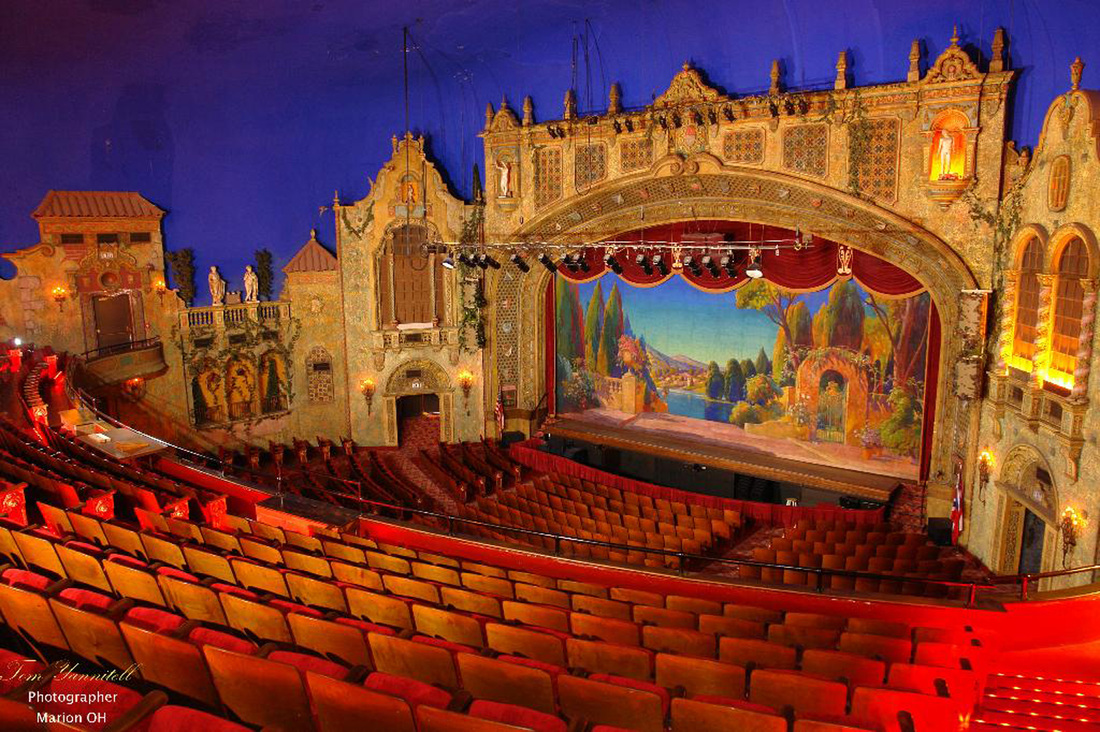
The Marion Palace Theatre – Marion
The Marion Palace opened as a cinema and Vaudeville theater in 1928, premiering with 4 Vaudeville acts and the film, Excess Baggage. The theatre is designed in Spanish Colonial Revival-style, and has several Roman and Greek statues designed by Pietro Caproni. Following several successful years as a cinema and multiple owners, the theatre needed extensive work to maintain its splendor. In the mid-1970s, a group of business owners, dubbed The Palace Guard, started a funding campaign to revitalize the theatre. The Palace Cultural Arts Association has operated the Marion Palace Theatre since then, and continues to provide new and exciting performances for Marion.
The Marion Palace Theatre shows films and live performances several times a month. See their schedule here.
The Lincoln Theatre – Columbus
Located just to the east of downtown Columbus, in the historic African-American neighborhood of King-Lincoln Bronzeville, is The Lincoln Theatre. Opened in 1928 as The Ogden Theatre, the Egyptian Revival theatre originally was used for Vaudeville performances and musical acts, but quickly transitioned into a cinema. It was renamed The Lincoln Theatre in 1939. Following several hard years, the theatre was closed in the early 1970s. The theatre reopened in 2009, with funding assistance from The City of Columbus and Federal Historic Preservation Tax Credits, and was widely seen as a catalytic revitalization project for the neighborhood.
See CAPAs current schedule here.
Northeast
The Akron Civic Theatre – Akron
In 1919, construction of a new theatre began in downtown Akron called The Hippodrome. In addition to a theatre, there were 30 planned shops inside an arcade. The project went bankrupt before it was complete. Soon after, Marcus Loew purchased the partially constructed Hippodrome and completed the newest Loew’s Theatre in Akron, designed by architect John Eberson. The interior is designed to resemble a Moorish castle, with Mediterranean elements throughout and is only one of a handful of surviving atmospheric theaters. After several ownership changes and nearly becoming a parking lot in the 1960s, the Akron Civic Theatre was extensively renovated in 2001, it reopened to fanfare with a new partnership with The University of Akron.
The Akron Civic Theatre has many live performances each month. See their current schedule here.
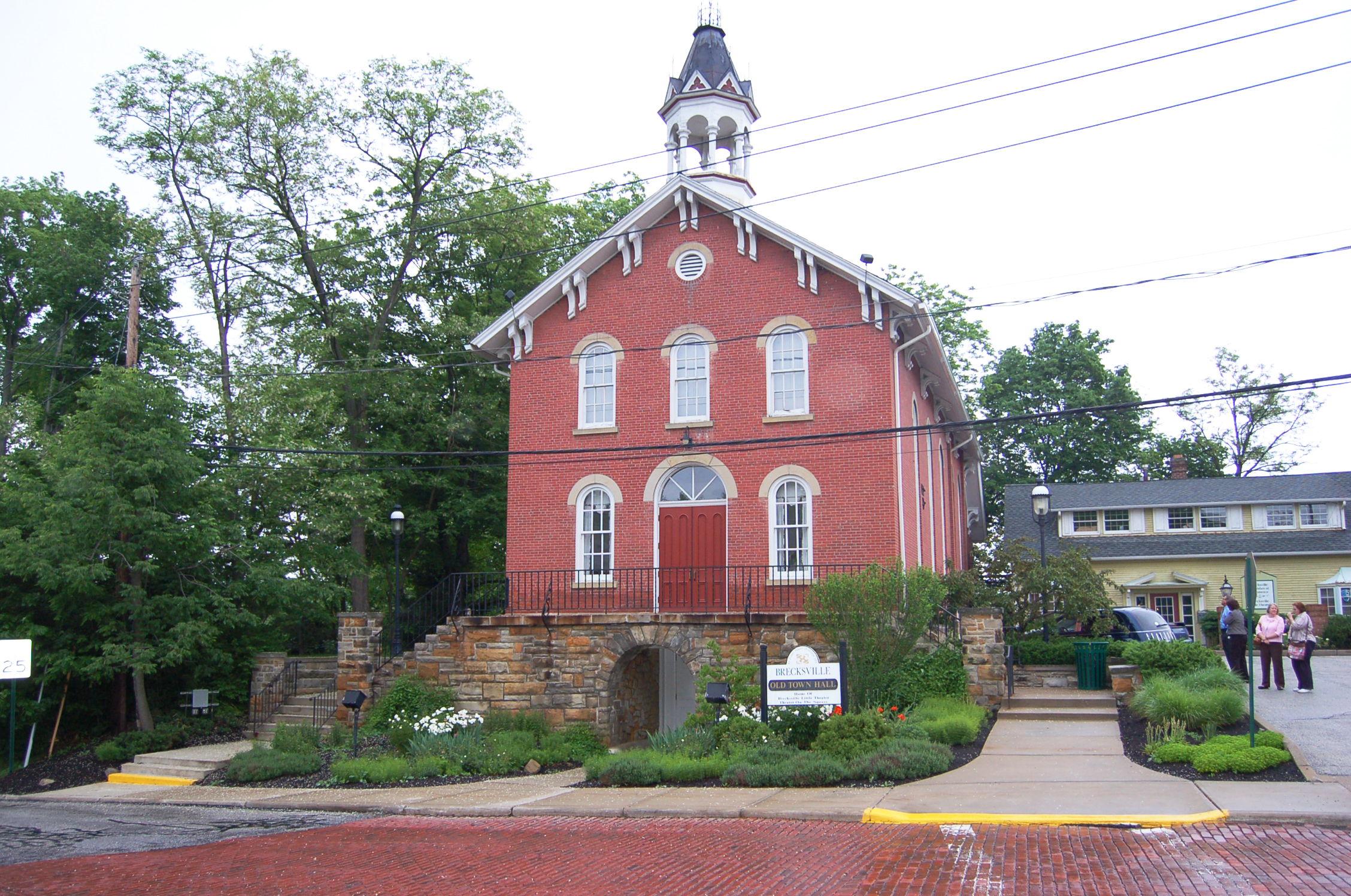
The Brecksville Theatre – Brecksville
The Old Brecksville Town Hall was built in 1874. In the 1940s, performances by the Brecksville Little Theatre began to be held in the town hall building. Paul Newman, yes, that Paul Newman, directed the comedy, Here Today in 1951 there. In 1975, a second theater group, Theater on the Square was established. Tragically, the old town hall was damaged in a fire in 1976, but was repaired. In 2017, it was announced the two theater groups were merging into The Brecksville Theatre and will continue to perform in the old town hall.
The new Brecksville Theatre has several shows lined up this fall. See the schedule here.
The Canton Palace Theatre – Canton
Like The Marion Palace Theatre and The Akron Civic Theatre, The Canton Palace Theatre was designed in a Spanish Colonial Revival style. It is also one of a few surviving atmospheric theatres. The Canton Palace Theatre opened in 1926 as a movie house and Vaudeville theatre. After a period of decline, the theatre closed on its 50th anniversary in 1976 and was soon scheduled for demolition. The Canton Jaycees saved the building and held it in trust until The Canton Palace Theatre Association was formed to operate the theatre. It reopened in 1980 and over $4M in renovations have taken place.
The Canton Palace Theatre continues to show films and have live performances. Their schedule of events can be viewed here.
The Gordon Square Arts District – Cleveland
The Gordon Square Arts District composes three theatres in the Detroit Shoreway: The Capitol Theatre, The Cleveland Public Theatre, and The Near West Theatre.
The Capitol Theatre opened in 1921 as part of the Gordon Square Arcade. As new cinemas arose, the arcade and theatre declined. A parapet collapsed in 1978, damaging both the arcade and Capitol. It was slated for demolition, but the building was saved by the Detroit Shoreway Community Development Organization. The Capitol closed in 1985. It was reopened in 2009 with the help of Ohio Historic Preservation Tax Credits, and become a catalyst toward neighborhood redevelopment.
The Cleveland Public Theatre was founded in 1981. In 1994-95, The Cleveland Public Theatre moved into two adjoining buildings on Detroit Avenue, including The former Gordon Square Theatre building, one of Cleveland’s oldest standing theatres.
The Near West Theatre sprang to life in 1978, using the third-floor ballroom of the St. Patrick Church Club Building as performance space. The newly constructed Near West Theatre building in The Gordon Square Arts District opened in 2015.
Lions Lincoln Theatre – Massillon
The Lincoln Theatre opened in 1915 during the silent era of film. It switched ownership several times during its life as a cinema. By the late 1970s, it was closed and waiting to be demolished. The Massillon Lions Club acquired the theatre in 1982, saving it from destruction. After extensive renovations, the Lions Lincoln Theatre was reopened and continues to entertain audiences.
The Lions Lincoln Theatre currently shows classic films and live performances. To see their current schedule, click here.
The Historic Ohio Theatre – Loudonville
The neoclassical Loudonville Municipal Hall and Opera House opened in 1910, with the opera house located at the rear of the building. The first performance at the opera house was The Flaming Arrow. The opera house was renamed The Ohio Theatre in 1931. Renovations of the theatre are ongoing with fundraising for a new lighting system underway.
The Ohio Theatre currently has live performances and movies. View their current line-up here.
Playhouse Square – Cleveland
Playhouse Square, the “world’s largest theater restoration project,” and the country’s largest performing arts center outside New York City, composes 5 historic theatres: The Allen Theatre, The Hanna Theatre, The Ohio Theatre, The Palace Theatre, and The State Theatre. Playhouse Square draws more than 1 million people annually to its 10 performance spaces while contributing in excess of $43 million in local economic impact every year exclusively from its performing arts activity
The Allen Theatre opened in 1921 as an Italian Renaissance silent movie house. The first film shown at The Allen was The Greatest Love starring Vera Gordon. It continued to show films until it closed in 1968. It was reopened in 1994 and underwent renovations in 1998 and 2011.
The Hanna Theatre opened in 1921 with a performance of Mark Twain’s The Prince and The Pauper. The theatre was designed in French Imperial style. It closed in 1988. It was reopened in 1997 and was fully renovated in 2008.
The Ohio Theatre was designed as an Italian Renaissance theatre. It opened in 1921 with a performance of The Return of Peter Grimm. It closed in 1969 and was reopened in 1982.
The Palace Theatre was opened in 1922 as a French Imperial-styled Vaudeville theatre. It was adapted to show films in 1926. It closed in 1969 and reopened in 1988 as The Connor Palace Theatre.
The State Theatre opened as an Italian Renaissance Loew’s theatre. The first film show was Polly with a Past. The theatre contains 4 murals by James Daugherty and a 320-foot long lobby, one of the longest in the world. The theatre closed in 1969. It was nearly demolished with The Ohio Theatre in 1972, which led to the revival of Playhouse Square. The KeyBank State Theatre reopened in 1984.
To view current events for Playhouse Square, click here.
Southeast
The Markay Cultural Arts Center – Jackson
The Markay Theater opened in 1930 with a showing of Playboy of Paris. The Art Deco theatre features 6 prominent panels depicting life in Jackson. It closed in the early 1990s, but reopened with the help of the Southern Hills Arts Council in 1997. An extensive renovation of the theatre took place and a grand reopening of the theatre occurred in 2015.
Currently, the Markay has several live performances and classic films. For a complete list of events, click here.
Peoples Bank Theatre – Marietta
The Hippodrome Theatre opened in downtown Marietta in 1919 as a Vaudeville theatre and movie house with a showing of the film, Daddy-Long-Legs. In 1949, it was renamed the Colony Cinema. In 1957, it hosted the world premiere of Battle Hymn, starring Rock Hudson. The Colony Cinema had numerous ownership changes and ultimately closed in 1985. The Hippodrome/Colony Theatre Association spent 15 years raising funds for the theatre, including an Ohio Historic Preservation Tax Credit for the project. Peoples Bank Theatre reopened in 2016 and hosted the State of the State address the same year.
Peoples Bank Theatre hosts live performances and film viewings. View their full line-up here.
Stuart’s Opera House – Nelsonville
Stuart’s Opera House opened in 1879 and was named after George Stuart. It continued operating until 1924, when the local coal economy crashed, bring down the opera house with it. In 1977, the Hocking Valley Museum of Theatrical History bought the opera house and began to restore the historic property. Following a fire in 1980, the process of restoring the property was begun anew. The opera house was officially reopened in 1997, after 20 years of hard-fought restoration work.
Stuart’s Opera House offers a variety of live performances to the Nelsonville community. For the current list of events, click here.
Twin City Opera House – McConnelsville
The Twin City Opera House opened in the late spring of 1892 to Gilbert and Sullivan’s “The Mikado”, sharing space in the mammoth building with the McConnelsville town hall. Nearly 20 years after opening, the first silent movies were shown in the opera house, and the first sound system was installed around 1930 using Vitaphone technology. In 1936, the opera house was updated to install sound projectors and renovate the auditorium to accommodate a new projection booth. This was the only time the opera house was closed to the public in its long history.
The Twin City Opera House continues to show films and hosts live performances, including The Ohio Valley Opry. Check full schedule for details of upcoming performances.
The Ariel Opera House – Gallipolis
The Ariel Opera House opened in 1895, just blocks from the Ohio River in downtown Gallipolis. After struggling in the post-WWII era, the opera house closed in the 1960s. Local citizens, led by local professional musician Lora Lynn Snow, banded together in the late 1980s to restore the opera house, and it reopened in 1990, becoming home to The Ohio Valley Symphony. In 2006, the Ariel was rededicated as The Ariel-Ann Carson Dater Performing Arts Centre, after local resident Ann Carson Dater purchased the opera house and presented it to the community as a permanent home for The Ohio Valley Symphony and for use as a performing arts center.
The Ariel-Ann Carson Dater Performing Arts Centre continues to be the home of the Ohio Valley Symphony and has theatrical performances as well. See their current events here.
![]()
Best Ice Cream in Ohio: Local Shops to Sample this Summer
July is National Ice Cream Month, established by President Ronald Reagan in 1984. To celebrate this quasi-month-long holiday, we discovered and sampled some of Ohio’s best ice creams (jealous yet?). So here is Heritage Ohio’s list of the best ice cream parlors in Ohio.
Dietsch Brothers Fine Chocolates & Ice Cream – Findlay
Dietsch Brothers has been serving ice cream and chocolates using family recipes since 1937. The popular Findlay store has been repeatedly named a “Top 10 Ice Cream Shop” by TripAdvisor and their chocolate-covered pretzels are a favorite of Bette Midler. In addition to ice cream cones, the store offers a variety of sundaes, old-fashioned sodas, and a unique banana split.
Locations
400 W. Main Cross St. & 1217 Tiffin Ave., Findlay
Aglamesis Brothers – Cincinnati
A Cincinnati tradition since 1908, Aglamesis Brothers is an ice cream lover’s paradise. The Oakley Square location, opened in 1913, is mostly unchanged since its opening, decorated with bright colors and warm marble. Beyond the traditional ice cream flavors you would expect are several creative flavors including pineapple pecan and banana chocolate chip. They also offer a good selection of Italian ices.
Locations
3046 Madison Rd. & 9899 Montgomery Rd., Cincinnati
Jeni’s Spledid Ice Creams – Columbus & Cleveland
James Beard Award winner Jeni Britton Bauer opened her first scoop shop in 2002, offering what was at the time a truly innovative approach to ice cream making. Ice cream at Jeni’s is made from grass-fed cow milk and whole ingredients, as well as a whole lot of creativity. The stores offer classic Jeni’s flavors like salty caramel and the milkiest chocolate in the whole wide world, as well a rotating collections of ice cream that offer some truly unique flavors such as sweet corn with black raspberry and banana with honey. We may be biased as Columbus locals, but we think this is some of the best ice cream in Ohio. This isn’t your ordinary ice cream parlor and should be a destination for any true ice cream lover.
Numerous Locations in Columbus & Cleveland
Mitchell’s Homemade Ice Cream – Cleveland
After an evening of fruitlessly hunting for homemade ice cream in Seattle in the 1990s, Mike & Pete Mitchell decided to make the “best, most delicious ice cream.” They opened their first store in Westlake in 1999 and have been serving Cleveland ever since. The stores offer ice cream classics and unique flavors like porter chocolate chunk and vegan offerings as well. The Ohio City location offers several flavors that you can only find at that store, which is also an Ohio Historic Tax Credit project. Simply put, the next time you are in Cleveland, visit a Mitchell’s store and thank us later.
7 Locations in the Cleveland Metro Area
Tom’s Ice Cream Bowl – Zanesville
Tom’s has been a Zanesville fixture since 1948. The shop has a great retro vibe to it, inviting you to eat more ice cream. Tom’s offers a good variety of classic ice cream flavors, but many people go for the over-the-top sundaes. Either way, you’ll be happy you stopped by.
Location
532 McIntire Ave., Zanesville
Graeter’s Ice Cream – Numerous Locations
When people talk about Cincinnati ice cream, you’ll undoubtedly hear that Graeter’s is the best ice cream in Ohio. Graeter’s traces its ice cream history back to 1868 when Louis Graeter started selling ice cream at street markets in Cincinnati. Starting in 1900, he and his wife started making ice cream using French Pots and the technique is still used by the company today. Vanilla and black raspberry chocolate chip are local favorites, but we suggest you try them all.
Locations in Cincinnati, Cleveland, Columbus, Dayton, & Oxford
Taggarts Ice Cream Parlor & Restaurant – Canton
Opened in 1926, Taggarts has been a family favorite since day 1. The restaurant offers a large selection of soups and sandwiches, but the ice cream takes center stage here. The most popular item is ‘The Bittner’, a 3/4 lb. sundae of vanilla ice cream blended with chocolate syrup and topped with roasted pecans. Absolutely delicious.
Locations
1401 Fulton Rd. NW, Canton & 107 S. Main St., Magnolia
The Cone – West Chester
The origin story of The Cone has to be one of the more unique tales in Ohio ice cream lore. The owner wanted to open a new and unique ice cream store. When his parents were vacationing in Florida, they happened upon a ice cream cone-shaped building for sale. He purchased it, brought it back to Ohio and opened The Cone in 1995. The Cone is known for their soft-serve ice cream, especially the strawberry, made with real strawberries. The ice cream and shaved ice menu is extensive, so you will have no trouble finding something to put a smile on your face.
Location
6855 Tylersville Rd., West Chester
Hartzler Family Dairy – Wooster
Just a few miles northeast of historic downtown Wooster is the Hartzler Family Dairy. The farm operates on the principle of “farming as nature intended,” so you won’t find dairy products made with antibiotics or pesticides used on crops. The family opened the dairy in 1996 to meet the demand for high quality dairy products. Hartzler’s Ice Cream Shoppe sells both food and ice cream. The centerpiece is the Barn Buster Parfait, an oversized hot fudge sundae with vanilla custard. Delicious.
Location
5454 Cleveland Rd., Wooster
Stoddard’s Original Frozen Custard – Kent
OK, ice cream purists, custard is not ice cream. But that shouldn’t stop you from visiting Stoddard’s, just outside of downtown Kent. To be clear, the shop does have ice cream too, but people absolutely love the frozen custard at this ice cream stand since it opened in 1948. It’s super creamy and delicious
Location
1321 W. Main St., Kent
Weldon’s Ice Cream Factory – Millersport
Buckeye Lake is a popular summer destination for thousands of Ohioans each year. What many people who are visiting don’t know is there is a wonderful ice cream parlor on the southwest shore of the lake in Millersport. Weldon’s opened in 1930 and continues to churn out the same delicious ice cream.
Location
2887 Canal Dr., Millersport
Bidinger’s Ice Cream – Wadsworth
Heading towards downtown Wadsworth on College Street, you’ll be greeted by a giant ice cream cone, letting you know you’ve arrived at Bidinger’s. The stand offers both hard-packed and soft-serve ice cream, but may astonish any visitor is the variety. Across the year, the store offers an ever-growing list of rotating soft-serve flavors including toasted coconut, creme brulee, and key lime, with all varieties available in a twist as well.
Location
410 College St., Wadsworth
Honey Hut Ice Cream – Cleveland
Honey Hut opened in 1974 with two flavors, vanilla and chocolate. The menu options soon expanded with the owner testing out new flavors on local firefighters. Today, you will find local favorites such as honey pecan on the menu, in addition to vanilla and chocolate, as well as other frozen treats to try.
5 Locations in the Cleveland Metro Area
Oser’s Dairy & Deli and Cherry Street Creamery – Canal Fulton
W are sure we’re committing a major faux-pas in the minds of locals, but we’re going to sit on the fence and say both Oser’s and Cherry Street Creamery are great. The two shops are located on opposite sides of the Ohio & Erie Canal that runs through the middle of Canal Fulton. Cherry Street Creamery is for fans of fresh-made custard and Oser’s serves hard ice cream devotees. Visit Canal Fulton and pick a side in this ice cream battle.
Location
Cherry Street Creamery, 136 Cherry St. W., Canal Fulton
Oser’s Dairy & Deli, 102 N. Canal St., Canal Fulton
Bonus: International Ice Creams
Tucked away in your city are many hidden ice cream gems you may have not discovered yet. We are talking about ethnic ice cream stands. You may have to find them by exploring your city or by word-of-mouth, but when you do find them, don’t be afraid to try them. They are always amazing. Since we are in Columbus, we will highlight just a few in our area that we think you should try, but find the ones closest to you! If you’re looking for more offbeat things to do in Columbus, Choosy Traveler has the lowdown on one of our favorite quirky statues.
Diamonds Ice Cream
Diamonds specializes in Mexican ice cream, fruit desserts, and authentic paletas. The ice cream is excellent, but you really want to go for the paletas, which you will recognize as a popsicle, but a popsicle that is better than any normal popsicle you’ve had. Trust us. They come in a wide variety of flavors and are either milk-based or water/juice-based. There are dozens to pick from, so go wild and get a few to try.
Location
4561 Bethel Sawmill Center, Columbus
Belle’s Bread
This Japanese bakery is part of a larger Japanese menagerie of shops and restaurants in the Kenny Centre Mall. The store offers amazing cakes and baked goods, but they also offer soft-serve ice cream. You can get vanilla, matcha, or matcha-vanilla swirl flavors. For those of you who want the full Japanese experience, we suggest getting a matcha ice, which is shaved ice with matcha syrup, condensed milk, and azuki beans topped with matcha ice cream. Absolutely delicious.
Location
1168 Kenny Centre Mall, Columbus
Mardi Gras Homemade Ice Cream
This Indian ice cream store has some of the creamiest ice cream you are going to find anywhere. They have the classic American flavors as well as a dozen or so Indian flavors such as rose, anjeer (fig), lychee, and Kesar Pista, a blend of pistachio, almond, saffron, and a pinch of cardamom. It’s some of the best ice cream we’ve had in Ohio. The owners are very proud of their ice cream and will let you sample them all to get the right one for you.
Location
1947 Hard Rd., Columbus
Related Posts:
Planning an Ohio road trip? Take a look at our favorite historic hotels in Ohio
Shop Local Ohio! Here’s Where to Find the Best Ohio Gifts and Souvenirs
![]()
Sash Mob! Windows Workshop
|
Join us May 19-21 for this awesome wood windows workshop weekend!
Heritage Ohio is partnering with Marsh Building Products, Marvin Windows and Doors, Habitat for Humanity Cincinnati, and Community Matters to teach window restoration while giving back to Lower Price Hill
They’re caked with paint, riddled with cracked glass, drafty, and they’ve been stuck shut longer than you’ve been alive. If we’ve described the window situation in your historic house, then it’s time to do something about it, and we don’t mean replace them. Heritage Ohio is excited to announce that we’re bringing old windows guru Jim Turner back to Ohio to help us conduct a #SashMob2017 in Cincinnati in May, and you’re invited.
Continuing Education
This 3 day workshop series offers up to 20 AIA HSW continuing education credits in total!
Friday Sessions
The sessions taking place on Friday the 19th will be classroom style and cover everything you need to know about wood windows, including how you can make them more energy efficient without replacing them and how to be safe when dealing with the potential of lead paint. Considering a restoration project? Don’t miss Chick McBrien, Marvin Windows and Doors, talk about research, planning, window assessment, standards, and historic tax credits with concern to historic restoration projects.
We will have window restoration specialist and National Trust Advisor Jim Turner, of Turner Restoration, talk about window restoration and will be available at the end of the day for an “Ask an Expert” session. If you have old windows that you would like to get advice on or an expert’s opinion about, please bring your pictures and your information with you to this workshop and ask Jim! He can answer your questions about both wood and steel windows. If you don’t need expert advice than you can join us for a tour of the Community Matters complex and learn about the amazing projects and work that this organization has been able to do in the Lower Price Hill neighborhood.
Find more information and register for Friday HERE!
Friday Night
Join Heritage Ohio and the Cincinnati Preservation Collective for a happy hour at The Mockbee! As part of the Sash Mob! Windows Workshop Weekend these preservation forces are teaming up to welcome the many preservation professionals from across the nation, who are coming to work in the great city of Cincinnati.
The happy hour will start at 6 pm with a tour of this fantastic building and we will wrap up the night by 9 pm. After all, we have some windows to save the next morning!
Saturday and Sunday Hands-On Workshop
If you’ve ever wanted to learn about making your old windows functional, energy efficient, or just more attractive; or, if you’re ready to tackle your own windows DIY project, but don’t know where to begin, then the weekend hands-on workshop is the answer for you! Over the course of two days May 20 and 21 you will learn about:
– the basics of window anatomy,
– freeing up you stuck windows,
– installing weather stripping,
– repairing weight ropes and chains,
– cutting and replacing glass, and
– re-glazing window sash.
Window restoration specialist and National Trust Advisor Jim Turner, of Turner Restoration, will lead the workshop.
Find more information and register for the weekend HERE!
Event Location
Friday’s sessions and portions of the weekend workshop will take place at The Sanctuary at Community Matters. The majority of the weekend workshop will take place at two buildings nearby where we will be restoring windows on-site.
Community Matters- 2110 St Michael St, Cincinnati, OH 45204
![]()
Go Outside and Play: Ohio’s 23 Best Parks
The Best State Parks and Metro Parks Across Ohio
Ohio has natural beauty in spades! We ought to know, we spend much of our year traveling around the state, and the team at Heritage Ohio has some pretty strong opinions on the best parks in Ohio. Here’s our favorite state, city and metro parks, organized by region:
Northeast Ohio Parks
Cuyahoga Valley National Park
Cuyahoga Valley National Park is Ohio’s only national park, but you couldn’t ask for a better example of Ohio’s natural splendor. Just a short drive south of downtown Cleveland, Cuyahoga Valley has plenty to offer any visitor. A few highlights of the park are the 65-foot high Brandywine Falls, the Cuyahoga Valley Scenic Railroad, and the historic village of Peninsula.
Ohio’s National Park covers 33,000 acres of parkland, leaving you and your family many weekends of exploration.
Where to Stay at Cuyahoga Valley National Park
We say get closer to nature and camp or rent an RV when exploring Cuyahoga Valley National Park! Find all the details to plan your trip here.
Liberty Park – Twinsburg
Just outside of Twinsburg is one of the hidden gems of Northeast Ohio. Liberty Park has a diverse offering of natural spaces for a suburban park. Visitors will delight in the natural beauty of the Tinkers Creek Nature Preserve and the towering Twinsburg Ledges area, both located in the park. You can explore both and more on the numerous trails within the park.
Holden Arboretum
Holden Arboretum is just a short drive from historic downtown Chardon in Geauga County. The arboretum will be a unique experience for many visitors, including Ohioans. Some of the many offerings of the Holden Arboretum include a butterfly garden, several rhododendron gardens, a hedge collection, and the famous Canopy Walk.
Mill Creek Park
It may be hard to believe, but Mill Creek Park in Youngstown rivals other large metropolitan parks like Central Park in terms of absolute beauty and depth. The sprawling park covers 4,400 acres and has diverse areas and topography. Highlights of the park for new visitors include Lanterman’s Mill, several historic bridges, the Wall Garden, and many archaeological sites from Youngstown’s steel-making history.
Franklin Mills Riveredge Park
Located in downtown Kent, Franklin Mills Riveredge Park is small compared with other parks on this list, but will surprise you with its design and features. The main focus of the park in the Cuyahoga River with an arched stone dam. You can explore the river along a boardwalk that follows the river. There are plenty of observation areas, as well as benches and tables to enjoy your day in downtown Kent.
Bonus: Killbuck Marsh
Located between Millersburg and Wooster, Killbuck Marsh is a hidden gem just south of Route 30. The area has an extensive natural history, and several Ice Age animals such as mastodon have been unearthed. Some of these animals can be seen at the Killbuck Valley Museum, just down the road.
Southeast Ohio Parks
Hocking Hills State Park
Hocking Hills is quite possibly the most famous of all the Ohio State Parks. Within minutes of arriving, you will certainly see why. The park is divided into five sections, but really they are parks within parks and all worth a visit. Absolute must-see features include the falls at Old Man’s Cave, the Cantwell Cliffs, and the nearby Conkle’s Hollow State Nature Preserve.
Beyond the parks, there are rustic cabins to stay in the area and lots of unique small towns to explore.
Where to Stay in Hocking Hills
Hocking Hills has a wealth of lodging options, including treehouses, luxury yurts, cabins, and even a cute vintage train car!
Lake Hope State Park
Just south of Hocking Hills State Park is Lake Hope. The park is encapsulated by Zaleski State Forest, making for some beautiful scenery. The beach is a great place to relax and go for a swim. The area has numerous hiking trails and connectors, including a trek up to the famous Moonville Tunnel. You can also visit the restored Hope Furnace, a blast furnace that sits near one end of the lake.
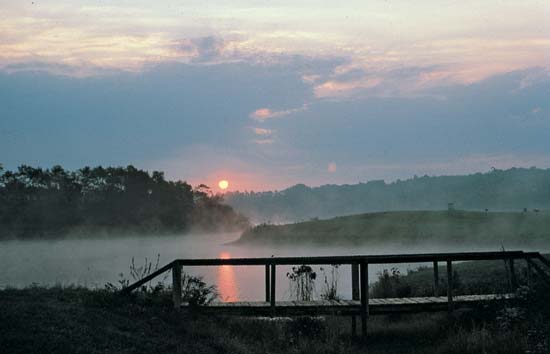
Salt Fork State Park
Just a few miles from historic Cambridge, is Salt Fork State Park, Ohio’s largest state park. The Park surrounds much of Salt Fork Lake and offers a variety of activities, such as hiking, boating, horseback riding, and golf.
Where to stay at Salt Fork State Park
The Salt Fork Lodge is a great place to stay with the family, as well as host a conference.
Central Ohio Parks
Blackhand Gorge State Nature Preserve
Named for a famed, and lost, Native American petroglyph that was found in the gorge, Blackhand Gorge is one of the most beautiful areas in Central Ohio. The preserve has many hiking trails to explore, as well as remnants of its past, including a section of the Ohio & Erie Canal locks and an interurban tunnel. Visitors can also explore the area via canoe or kayak on the Licking River.
Buckeye Lake State Park
Renowned in Central Ohio for boating, Buckeye Lake State Park is a water lover’s paradise. The lake is surrounded by quaint communities, and has plenty of activities for non-boaters as well. You can even visit Cranberry Bog, which is a natural marvel. Tours of the bog usually occur in June.
Mohican State Park
Located between the historic communities of Wooster, Millersburg, Mount Vernon, and Ashland, Mohican is a forested oasis and perfect for a weekend getaway. The park has several hiking trails, campgrounds, and even a covered bridge.
Where to Stay at Mohican State Park
For a unique place to stay during your visit, check out the treehouses at The Mohicans.
Dawes Arboretum
Just east of Columbus, you will find a true gem of a park, Dawes Arboretum. The Arboretum seems to have it all: historic Daweswood Farm, numerous trails, a nature center, formal Japanese garden, and even a driving tour. It’s a definite stop for any nature lover, and best of all, it’s free to visit!
While in the area, make sure to visit the newly revamped downtown in Newark and catch a show at the historic Midland Theatre.
Rhododendron Cove State Nature Preserve
Located just south of Lancaster, Rhododendron Cove Preserve sits on an unassuming hill, but offers a bounty of beauty once you make it to the summit. Atop the hill are dozens of Rhododendrons nestled amongst rocky outcroppings, making for great photography. After visiting Rhododendron Cove, travel down the road and visit two additional parks: Wahkeena Nature Preserve and Clear Creek Metro Park.
Bonus: Topiary Park
On the east side of downtown Columbus, The Topiary Park is a living art installation on the grounds of the former Ohio Deaf School campus. Visitors can either take docent-led tours or explore the park on their own. In addition to the numerous plant sculptures, there is also a “tree walk” visitors can take to see the many types of trees within the park. Choosy Traveler has details on some other worthwhile parks in the Columbus area, including Battelle Darby Creek, where you can see wild bison, and Shrum Mound.
Where to Stay in Columbus / Central Ohio
Columbus has a number of incredible hotels to suit every taste, from the stunning historic art deco Leveque Hotel, to the beer-tap-in-every-room Doghouse Hotel, and quaint vacation rentals in the historic German Village neighborhood.
Southwest Ohio Parks
John Bryan State Park – Clifton
Located near the historic Village of Clifton, John Bryan State Park is defined by the Little Miami River and the Clifton Gorge area it carved out. The striking features of the gorge and the forested landscape surrounding it make for some beautiful hiking scenery year-round. The next time you visit Clifton Mill, make sure to stop by John Bryan State Park.
Caesar Creek State Park
Nestled between Waynesville and Harveysburg, Caesar Creek State Park is a fossil hunter’s playground. You will need to apply for a fossil collecting permit to hunt fossils at the park, but it is well worth the effort. Some common finds include trilobites, brachiopods, and corals. In addition to fossil hunting, the park also offers camping, swimming, and boating. Other attractions in the area include historic downtown Lebanon and Caesar’s Creek Pioneer Village.
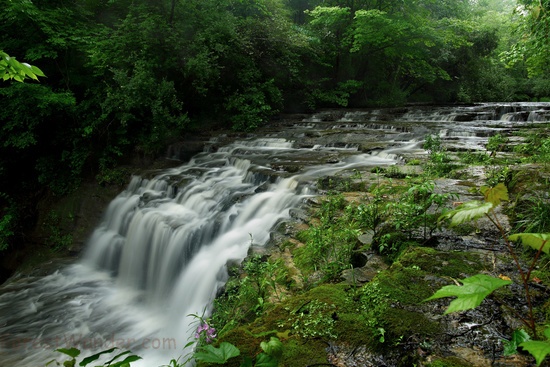
Fallsville Wildlife Area
Like the name suggests, the prominent feature of the Fallsville Wildlife Area is a large, serene waterfall. The small park packs in the beauty and is perfect for a relaxing afternoon stroll to the eye-pleasing waterfall and old mill site.
While in the area, check out the historic downtown of nearby Wilmington. There are a lot of great shops and the inside of the Clinton County Courthouse is stunning.
Ault Park
When you look at “must-see” lists of Cincinnati, you will undoubtedly come across Ault Park. A visit to the park will certainly show you why. As you arrive, you will immediately notice the large and picturesque Renaissance-style pavilion, popular with wedding parties. Beyond the pavilion, you will find several walking trails, a beautiful botanical garden, and plenty of relaxing space.
Where to Stay Near Ault Park in Cincinnati
Even if you only stop by to gawk at the truly incredible art deco lobby, Cincinnati’s Netherland Plaza Hotel is not to be missed!
Northwest Ohio Parks
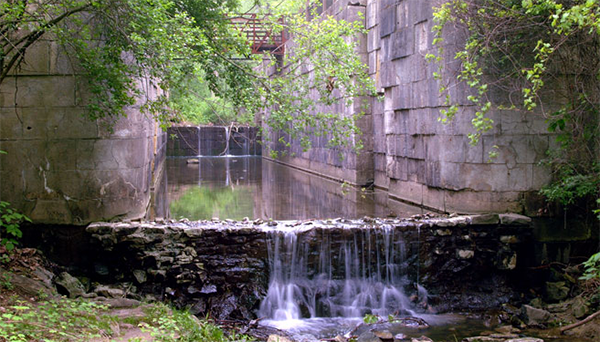
Side Cut Metropark
Side Cut Metropark is steeped in history. The park occupied land that was once part of a side cut of the Miami & Erie Canals. You can still visit 3 of the 6 locks from the canals, having been restored by WPA workers in the 1930s. Beyond the historic locks, the park offers picturesque scenery, an extensive network of trails, and plenty of wildlife.
Wildwood Metropark
Wildwood Preserve was once the home of Champion Spark Plug founder, Robert Stranahan. The park has an amazing wooded trail network and the property still has the Georgian Colonial Manor House Stranahan built. It is a must visit park in the heart of Toledo.
Magee Marsh Wildlife Area
Every spring, thousands of migratory birds visit Magee Marsh on their way to their summer nesting spots. Located on the shore of Lake Erie, the marsh is not only a destination for birders, but the extensive trail network of the wildlife area and nature center make for a great afternoon out with the family.
North Bass Island State Park
Unlike other parks on this list, getting to North Bass Island is a bit challenging to get to, but worth the hassle. Currently, the only means to get to the island are boat and airplane. Once you get to the island, you’ll be able to take in the gorgeous, untouched wilderness. Fishing is permitted on the island, as well as hiking and camping via permit.
More Ohio Love:
Shop Local: Best Ohio Gifts and Souvenirs from Local Artisans
![]()
Webinar: Get Ready to Enjoy Cincinnati, A Preservation Wonderland!
September 7th, 2016, 1 pm – 2 pm
This webinar will preview the region of the conference and highlight some of the best known and least known historic sites of Cincinnati. You may think you know the place but if you haven’t been here in the past few years, we’re sure you will be surprised at amount of preservation completed and underway. We will give an overview of downtown so you will not miss any interesting buildings and will highlight a few of our favorites that are often overlooked.
This webinar is approved for 1 AIA continuing education credit.
Heritage Ohio Members Register Here
Not a Member? Join Heritage Ohio now to get access.
PRESENTER BIOS
 Paul Muller, AIA has been the executive director of Cincinnati Preservation Association since 2011. Mr. Muller is an architect with extensive experience in preservation and civic projects. He served on the board of the Port Authority of Greater Cincinnati, the entity which created the master-plan for the central riverfront development known as “The Banks”. He currently serves on the Urban Design Review Board for the City of Cincinnati and the Union Terminal Restoration Advisory Committee for Hamilton County.
Paul Muller, AIA has been the executive director of Cincinnati Preservation Association since 2011. Mr. Muller is an architect with extensive experience in preservation and civic projects. He served on the board of the Port Authority of Greater Cincinnati, the entity which created the master-plan for the central riverfront development known as “The Banks”. He currently serves on the Urban Design Review Board for the City of Cincinnati and the Union Terminal Restoration Advisory Committee for Hamilton County.
Margo Warminski is Preservation Director of Cincinnati Preservation Association, a position she has held since 2004. She serves on the board of Cincinnati Form Follows Function, a Modernist advocacy group, and the Dayton, KY, Board of Architectural Review. Margo is co-author with Debbie Mills and the Greenhills Historical Society of Images of America: Greenhills, published by Arcadia Publishing in 2013.
![]()
Tales From a Privy Shaft Part 2
This blog post is part 2 of 3 telling the story of urban archaeology in a Cincinnati neighborhood. All information is credited to the archaeology report, “Queensgate II: An Archaeological View of Nineteenth Century Cincinnati,” by Thomas Cinadr and Robert Genheimer. The first part of this story left off discussing the process Cinadr and Genheimer used in selecting the lots. Especially when it comes to urban archaeology, it is important to remember site activity occurred not only in the house, but the entire lot. While today we throw meal leftovers and unneeded parts down the disposal or in the garbage can, get our water from the pipes in our house, and use the toilet in the bathroom, prior to the 20th century these were outdoor activities. Excavations to expose these activities and the differences between classes were the main objectives of this investigation. This blog will focus on the history of each lot and the excavation of each feature by Miami Purchase Association. The history of each lot was provided by Stephen Gordon and Elisabeth Tuttle’s 1981 study, “Queensgate II: A Preliminary Historical Site Report.”
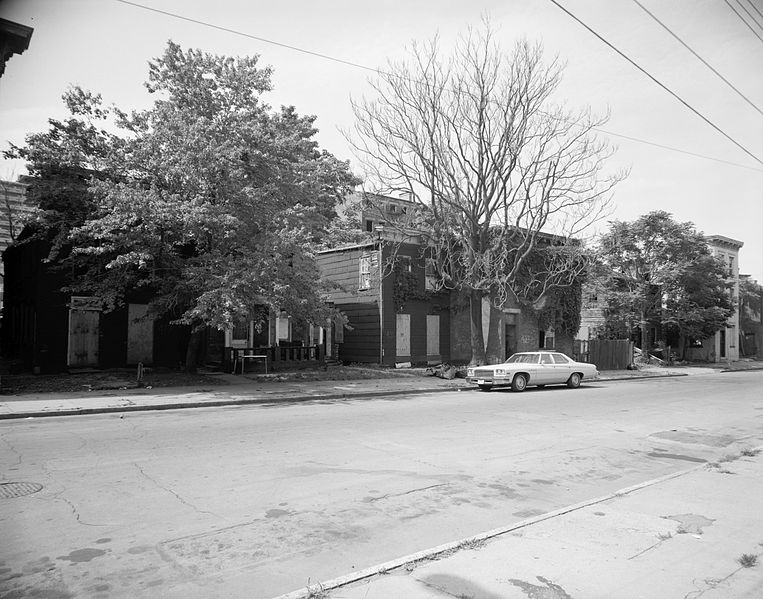
Betts Longworth Historic District (formerly Queensgate II) taken July, 1982.
Library of Congress, Prints & Photographs Division, OHIO,31-CINT,20-2
425 Chestnut Street
Cyrus Dempsey purchased this lot in 1847, and a house was built by 1849. Cyrus’ wife, Sarah, was a schoolteacher, and following Cyrus’ death Sarah remarried and remained in this house. Her new husband worked his way up from a copyist to a bookkeeper. In 1868, a new middle-class family moved in here and remained until 1900. After this family, a German immigrant family moved into the house and remained there until 1941. Three families called this place home in the span of just over 90 years. After 1941, we see a change towards the working class and a noticeable transient type of tenant; 6 tenants in 26 years. The house stood vacant from 1969 until 1981, and was demolished the following year.
Archaeologists from Miami Purchase Association used a heavy duty pry bar was used to lift the massive concrete slab covering the privy shaft. A layer of 20th century debris was cleared and a brick pad was found. Beneath that was the circular limestone outline of the privy shaft. Much of the upper portions of the privy shaft contained ash and heat altered materials, butchered bone, and 20th century bottles and ceramics. After about 10 feet, there is a change from solely kitchen dumping material to the introduction of a loose brown seed filled matrix (decayed fecal material) intermixed with the kitchen refuse. According to Cinadr and Genheimer, the artifacts suggest that the deposit dates between the 1880s to early 20th century.

A new level was formed every 12 inches. A new horizon is formed as the soil changed. Credit: http://en.wikipedia.org/wiki/File:Estructura-suelo.jpg#filelinks
Cinadr and Genheimer explain heavier amounts of 19th century glass and ceramics were uncovered in the next level below. Moving through the following three feet, there was still good evidence for kitchen refuse activity in addition to badly corroded metal and some glacial soils. The next horizon (layer of activity change) is confined to Level 14 and has heavy amounts of fecal material as well as architectural materials and kitchen refuse. Towards the end of this level, a gray clay matrix, followed by sand was found, indicating the Wisconsin Outwash and the bottom of the feature. Unlike the other privies studied by Cinadr and Genheimer, the diameter of this perimeter started at 3’8” and decreased with depth, ending at 2’3” at the base.
427 Chestnut Street
Next door stands a three story brick building. Archival research by Gordon and Tuttle (1981) shows that a frame house built sometime between 1848 and 1850 was standing in 1855. The current brick house replaced the frame structure by 1858. James Porter (a house painter) and his wife are first listed at this address in the 1849 city directory. A servant was listed in the 1880 census, but only for that year. James Porter passed away in 1889, and their grandson, E. A. Ferguson (16 years old) moved in with James’ wife, Margaret. He became a clerk and later a traveling salesman for a book company. In 1898, Margaret passed away and a man named Charles Dustin, listed as a night watchman, moved in. The mystery of Charles will play out later, but he is an example of unexpected mysteries uncovered during archaeology. The occupants of the house are unknown from 1901-1909. The next occupants listed began a line of working-class and African American tenants. While some stayed longer than others, there was significant movement in and out of the house by single males, mostly listed as laborers, which could suggest that people went where there was work. By 1981, the house was vacant.
A 13.5’ by 16’ addition once stood at the rear of the house, and is now covered by a concrete pad. Archaeologists removed the pad and found a dinner fork inscribed, “Extra Coin Silver Plate 1902.” Further testing revealed a laid brick pad, underneath which was a circular brick privy. Two large concrete slabs were found at the center of the shaft, indicating it was capped. Below that, excavations began. The way this privy shaft was used can be seen in the depositional patterns. Cinadr and Genheimer highlight three main activities which this privy was used for: dumping place for construction activities, kitchen refuse dumping, and as a toilet facility. The upper levels had horizons of solely kitchen dumping, as marked by butchered bone, shells, and ash from cooking byproduct. They point out the point in the depositional history where it is likely that indoor plumbing was installed. Below that point, kitchen dumping and fecal material are intermixed. The heavier the density of artifacts and the larger the horizon, the longer the privy was used for that function. The other activity found in the depositional history is construction. Using diagnostic artifacts including nails, coins, and bottles, dates can be narrowed for depositional activity.
The cistern, however, presented quite a different story for Miami Purchase Association. Beneath a large, thin concrete pad was an intact brick patio. Soon after beginning excavations, it became clear that this feature was a brick lined beehive cistern. Cinadr nad Genheimer explain that while it wasn’t surprising to find a cistern close to the house, it was somewhat surprising to find two walls extending from it to the north and the west. The wall extended from approximately three feet south to the eastern part of the cistern. After further excavations, it was determined that these walls belonged to the former addition. Due to the massive volume of soil and artifacts uncovered from within the cistern, a sampling method was enacted. Every fifth bucket of soil was screened for the first level, and every 10th bucket was screened after that. Hand trowling insured that whole bottles, bottle bases and tops, large bones, and larger artifacts were collected, while avoiding the substantial amounts of broken glass, and badly corroded metal. The next horizon was full of white ash with few artifacts. After the 4th level was reached, the walls no longer remained stable due to increasing dampness. Based on the dimensions, it was calculated that 3,180 gallons of water could be stored in this cistern.
In order to refine a construction date for the house, a builder’s trench was excavated below the front porch of the structure. Two feet below the surface, two large cut limestone slabs sitting parallel to each other were found. Below them, an intentionally laid brick area forming an arc was exposed. One possibility presented by Cinadr and Genheimer was the possibility that the limestone slabs were originally stairs, and once they became unstable, a wooden porch was constructed. Excavations point to two distinct periods of construction. It appears that Levels 1-4 (the upper 4 feet of the excavation) were considerably disturbed after construction of the house. The second period of construction was that of the house itself. Based on the artifacts identified, the dumping activity was unspecialized. Artifacts included a mix of kitchen refuse, marbles, buttons, a few coins, bottle glass, several ceramics of varying types, and architectural material, all dating to the mid-19th century.
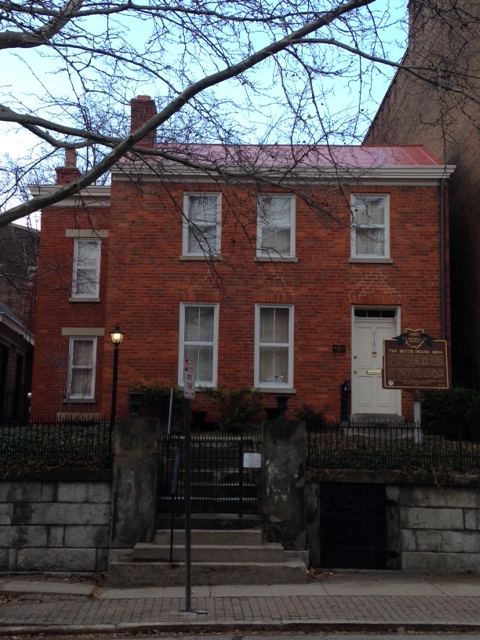
416 Clark Street
This property, more commonly known as the William Betts House, was the beginnings of Queensgate. The brick house was built in 1804, with a brick and frame additions created at separate times but are known to pre-date the neighboring 1878 house, and a metal addition constructed in the 20th century. An early kitchen addition was badly damaged in the 1811 New Madrid Earthquake. The Betts family lived in the house until 1825, with 100 acres of the 111 acre property being split up and going to auction in 1833. It is thought that the privy currently on the property was constructed at this time. The 11 acres which were not sold included the 1804 house, which continued to be lived in by the Betts family until 1849. Dr. Alex Johnston and his family lived in the house during the 1850s and into the 1860s. The house remained part of the mercantile society until the turn of the century, when the occupants would more likely be considered middle class. Unlike the other two houses, the occupants were families who remained in the house for much longer periods. The house was occupied until 1981, when it stood vacant.
Clearing of a feature identified during the survey work revealed a large rectangular limestone lined walled feature which went right up to the foundation of the neighboring property. The privy fill was clearly disturbed for the first four feet. This all became known as Level 1. The privy shaft took a circular shape 4.2 feet in diameter by the next level. Artifact densities are light until the end of Level 3. After this, a large deposit of kitchen refuse (over 300 butchered bones), a variety of bottles, clay pipes, and medicine bottles including a Paine’s Celery Compound bottle were found. Based on diagnostic artifacts, this deposit dates roughly around the turn of the 20th century. A brick stabilization wall divided the privy shaft in half from Levels 4-7, with a portion of a wood beam at the bottom. Ash deposits surrounding the wall and arch fall continue through Level 13. Moderate densities of artifacts including flower pots, lamp glass, rubber combs, flavoring extract bottles, metal, electrical wire, window glass, sewing machine oil, tin cans, celluloid, leather shoes, clay pipes, and a variety of ceramics, medicinal bottles, and butchered bone were found within the ash deposits. Temporally sensitive artifacts place this portion of the privy at mid 1890s. As the excavation progressed, it was noted that fragments from a single artifacts were found in several levels. For example, fragments from a badly shattered brown spongeware teapot were found in Levels 6, but also in Level 14 (8 feet further below). Excavations ceased at after Level 19 due to decreasing stability of the walls and cold temperatures. The southern half of the privy shaft was excavated (unscreened) to 24’6” and then a 5 foot soil core was used to determined if any changes in soil would occur. The same types of artifacts were encountered until the bottom 2” of soil, which contained a dark seed-bearing level (likely fecal matter). Cinadr and Genheimer note that it appears this privy was quickly filled around the turn of the 19th century. The privy shaft was likely not capped until after 1959, as mid-20th century artifacts including a 1959 dog tag were found in the upper levels.
An attempt to locate depositions related to the construction of the house was made with a 3’x6’ unit next to a wall of the original portion of the house. A small assemblage of a mix of 19th and 20th century artifacts were located in the first level, including portions of a Diet 7-up bottle near mid 19th century ceramic shards. The next level below included architectural artifacts, as well fragments from an aqua glass bottle embossed Dr. D. Jayne’s Oleaginous Hair Tonic, whose business began in 1839. A thin gray clay material was noted near the foundation of the house from Level 1 until Level 4, extending out from the house up to 13” and then retreating back to the 3” from the foundation in Level 4. A variety of construction material, early 19th century ceramics, and a fragment of prehistoric chert, along with a small chert projectile point were found in the horizon next to the clay material. The foundation was made of undressed limestone slabs, which stops short of extending to the basement floor. Based on the artifacts uncovered, Cinadr and Genheimer explain that it is likely that this building trench dates to the construction of the original house and was undisturbed after the first level.
The last portion of this story will focus on the analysis of the artifacts and the results from Cinadr and Genheimer’s excavation. Today the William Betts house, at 416 Clark Street, is open as a museum. Learn more about the Betts family history and their house check out The Betts House.
ODSA Announces Cincinnati Historic Tax Credit Event
You are invited to celebrate Cincinnati’s Historic Buildings…
Tuesday, January 14, 2014
10:00 a.m.
21c Museum Hotel
609 Walnut Street
Cincinnati, Ohio 45202
The Ohio Development Services Agency invites you to this special event to celebrate Cincinnati’s preservation of historic landmarks. Speakers include David Goodman, Director of the Ohio Development Services Agency; Mary Cusick, Chief of TourismOhio; Stephen Leeper of the Cincinnati Center City Development Corporation (3CDC) and Kevin Pape of the Over-the-Rhine Foundation. Join us for a presentation and tour of the award-winning facility, 21c Museum Hotel and learn about other Ohio Historic Preservation Tax Credit projects coming to fruition in 2014.
Questions can be addressed to Nathaniel Kaelin, Ohio Historic Preservation Tax Credit Program Manager, at (614) 728-0995.
Parking available via valet (for a fee) and at nearby garages



